The best TV comedies on Hulu
Seinfeld may have departed for Netflix, but Hulu subscribers can still enjoy a new season of Pen15 and a Frasier rewatch ahead of the revival
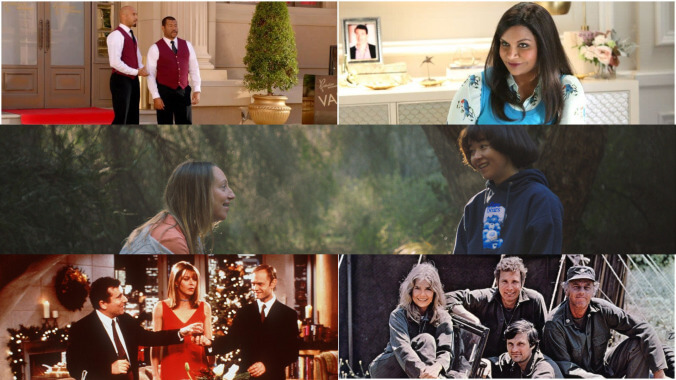
Streaming libraries expand and contract. Algorithms are imperfect. Those damn thumbnail images are always changing. But you know what you can always rely on? The expert opinions and knowledgeable commentary of The A.V. Club. That’s why we’re scouring both the menus of the most popular services and our own archives to bring you these guides to the best viewing options, broken down by streamer, medium, and genre. Want to know why we’re so keen on a particular show? Click the links for some in-depth coverage from The A.V. Club’s past. And be sure to check back often, because we’ll be adding more recommendations as shows come and go.
Hulu subscribers can also check out our list of the best movies on the service—and if you’re the type who likes to bundle, we’ve got film picks for Disney+, too.

The further away television gets from 30 Rock’s time on the air, the more prescient the sitcom becomes—especially when it comes to all things NBC. Which is maybe the last thing anyone would’ve thought when it first premiered, compared to the series that was supposed to succeed, Aaron Sorkin’s funny-for-the-wrong-reasons Studio 60 On The Sunset Strip. However, Tina Fey’s absurd and quick-witted comedy lasted for seven seasons, created a television legacy, and spawned a comedic style and sensibility that made shows like and (the woefully underrated) work. It also left us with the greatest life advice possible: “Never follow a hippie to a second location.” []
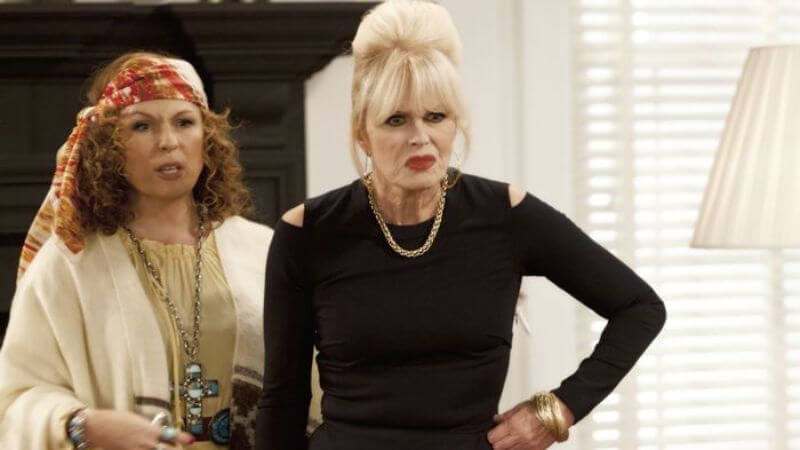
gets a lot of credit for being “the show about nothing,” but not much happened during Absolutely Fabulous’ multi-decade TV run, either. Generally, PR agent Edina Monsoon (Jennifer Saunders) and her ambiguously employed yet exceedingly well-connected pal Patsy (Joanna Lumley) would get into some sort of pill-and-booze-fueled trouble, make complete fools of themselves, and learn nothing because Edina’s daughter, Saffron (Julia Sawalha), was always there to bail them out. Ridiculous outfits were worn, backhanded compliments were exchanged, and a drunken good time was had by all. []
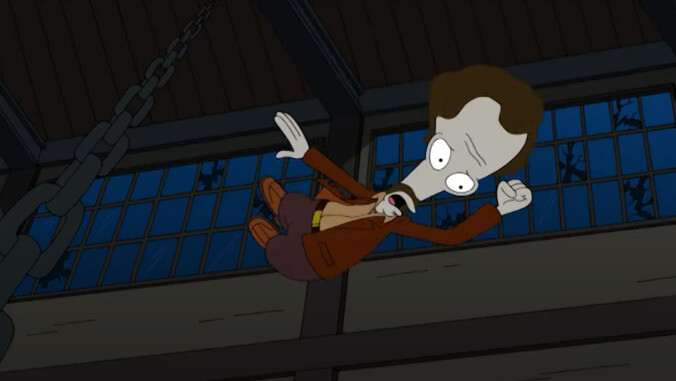
premiered in the 2000s, but it wasn’t until the ’10s that it fully broke out of its “ rip-off” cocoon and emerged as a beautiful butterfly that Seth MacFarlane had wisely left in the hands of better, funnier writers. I completely understand people giving up on the show, especially after its crummy early seasons, but in the last decade it became a brilliantly over-the-top deconstruction of sitcom tropes. More importantly, it developed a smarter, sillier sense of humor, like in this all-time-great clip where Stan explains his high school nickname. []

The series that launched a thousand “Phrasing!” jokes has also proven to be one of television’s most persistent survivors, with not even a three-year-long coma capable of keeping Sterling Archer and his various Oedipal and emotional issues down. But regardless of whatever zone of danger its titular hero finds himself in, Archer has firmly established itself as one of TV’s most consistent sources of smartass, zippy dialogue, with one of the best voice casts ever assembled making regular meals out of Adam Reed’s fast-paced quips. Few comedies would dare demand their viewers bring an appreciation for both fart jokes and Bartleby The Scrivener gags to the table; even fewer could make the combination feel so effortless. []
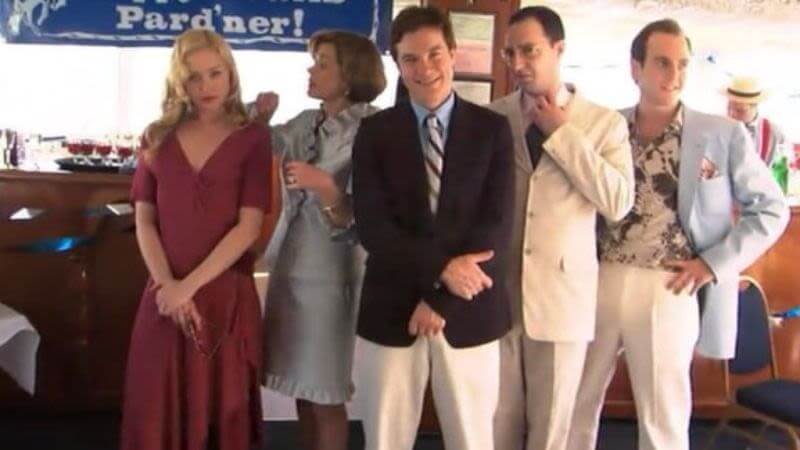
Like its main characters themselves, the reputation of Arrested Development is no longer as sterling as it once was; a star accused of the type of behavior he used to lampoon and a tepidly received Netflix revival will have that effect. But if there’s anything to be learned from this show, it’s that fortunes may fall and rise, but there’s always money in the banana stand. [Click click.] The first three seasons about a wealthy family who lost everything and the one son who had no choice but to keep them all together remain a pinnacle of the sitcom form, fast and funny and so full of mounting callbacks, double entendres, and chicken dances that the original DVD box sets practically invented the art of binge-watching. At the center of this farcical whirlwind are the Bluth family, the picture-perfect embodiment of brains and/or souls rotted away by wealth, forever captured at their least flattering by an ensemble (Will Arnett, Jason Bateman, Michael Cera, David Cross, Portia de Rossi, Tony Hale, Alia Shawkat, Jeffrey Tambor, and Jessica Walter) who wound up populating many of the great TV comedies that followed in Arrested Development’s wake. [Erik Adams]
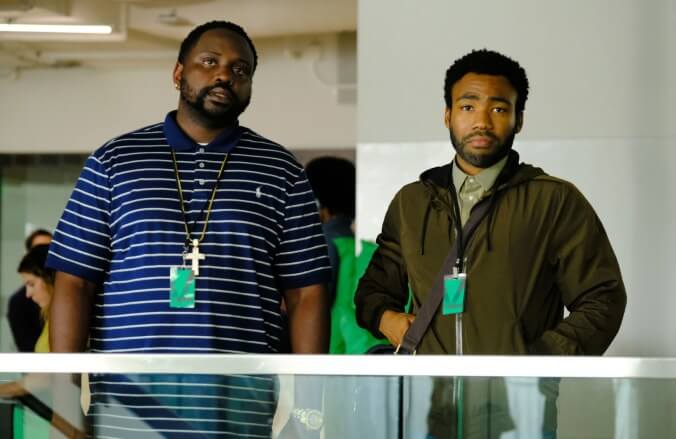
All it took was a glowing box of J.R. Crickets’ lemon pepper wet wings to encapsulate the essence of Donald Glover’s innovative series. Atlanta captures both the inherent beauty and hard truths of the Black experience, shrouding familiar moments with occasionally surreal storytelling elements. (Why is Justin Bieber Black in the Gloververse? Because it’s hilarious.) In just two seasons Earn, Paper Boi, and Darius have poignantly delivered the hard truths that can hold us back and the persistent dreams that allow us to continue pushing forward, all while flexing their chameleon-like ability to satisfy almost any kind of narrative. Is Atlanta a dark comedy, a coming-of-age tale, an occasional horror story, or a gripping drama? The answer is yes. []
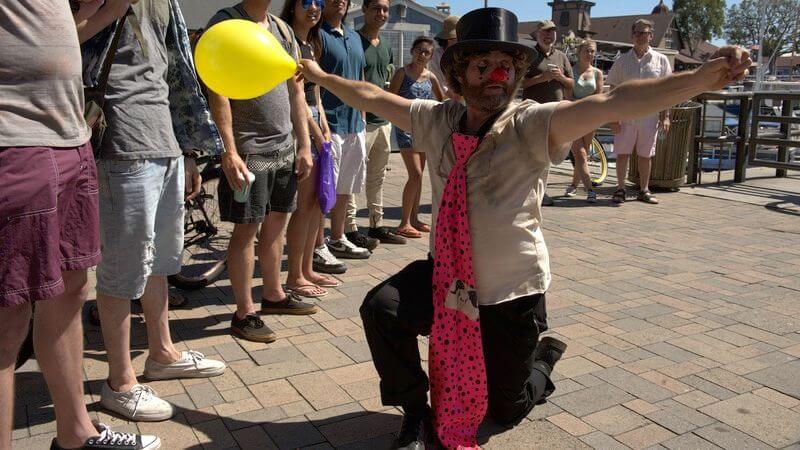
Not since the too-brief run of Late World With Zach has there been a TV show as suited to Zach Galifianakis’ unique comic energy. The Hangover star anchors Baskets in the dual role of wannabe clown Chip and his more successful brother Dale, whose long shadow Chip fights to escape after he flunks out of a French clowning school and moves back home and gets a job at the rodeo. And yet with all that Galifianakis to go around, the women in Chip’s life manage to steal the show: insurance adjuster Martha (Martha Kelly) and mother Christine (Louie Anderson). []
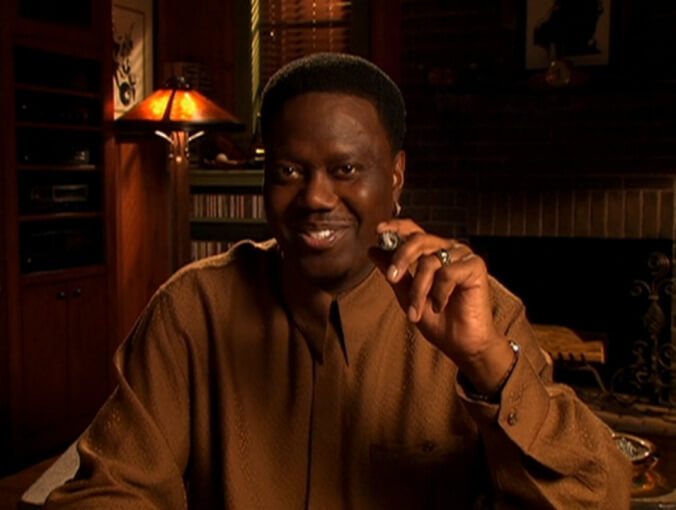
plays an exaggerated version of himself, a married, successful comedian with no kids. His sister enters rehab, so he’s suddenly stuck with three tykes: a snippy teen, a hopelessly nerdy boy, and an adorable little girl. Luckily, he has a gem of a wife (Kellita Smith), who’s happy to help any way she can. Especially in its early seasons, this Larry Wilmore-created, Emmy-winning show was a surprisingly perceptive, often devastatingly funny deconstruction of Mac’s persona. Playing himself as a bossy, masculine know-it-all who delivered furious rants to the camera, the development of his tough-love relationship with his young charges was perfectly handled. At its best, The Bernie Mac Show had shades of and could be just as bluntly funny. []
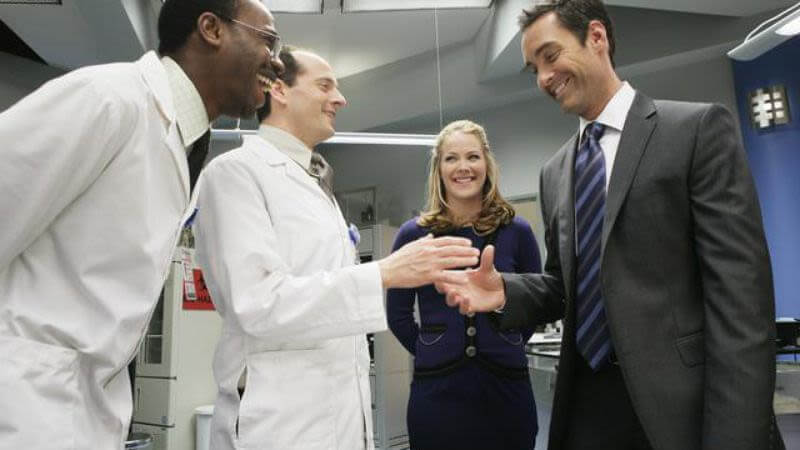
, creator Victor Fresco said that Better Off Ted was inspired by “the sort of disconnect between our personal and public lives, that we can teach our kids to be moral, to know right and wrong, and yet when we go into the workplace and we work for giant corporations, we see decisions made that are not based on any of those qualities that we want our kids to have.” Fresco dealt with similar themes on his previous series, the equally short-lived Andy Richter Controls The Universe, but he hit the parody of corporate thinking even harder in Better Off Ted, making a sitcom that was ostensibly about how some very likable people could get ensnared in terrible endeavors because of their innately human tendency to try and excel even at jobs not worth doing. []
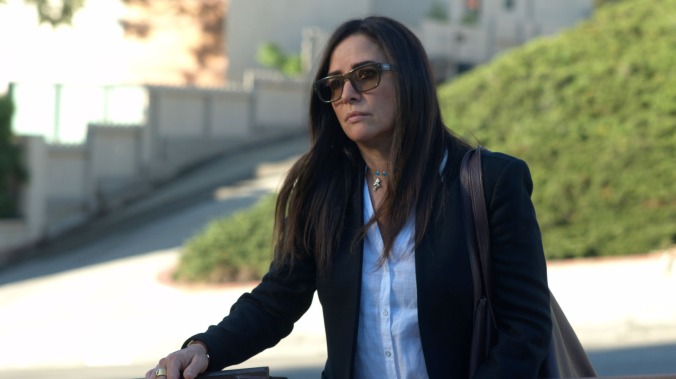
The rise of both the female-led TV comedy and the half-hour series converged in Better Things, Pamela Adlon’s slightly surreal, thoroughly engrossing look at family, the filming industry, and everything in between. This FX dramedy has improved by the year, as Adlon has grown more comfortable in the role of director and writer (along with series lead and co-creator). Though her character remains beleaguered, Adlon is anything but, guiding the series through off-screen turmoil and helping to make it one of the most incisive and empathetic comedies of the decade. []
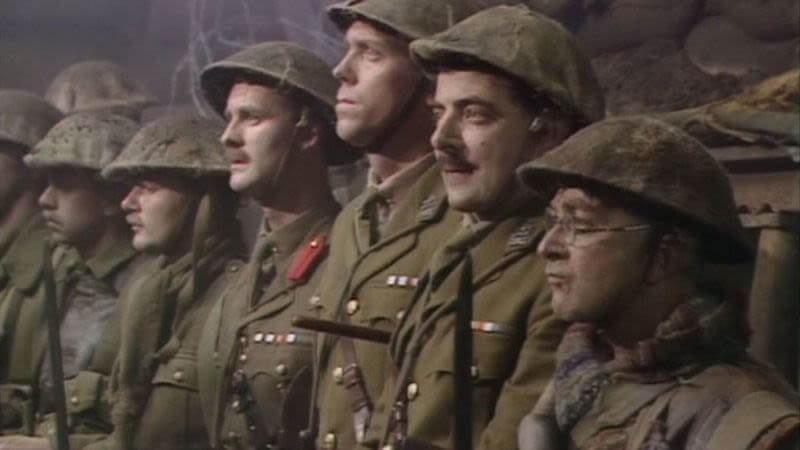
Over the course of six years (1983 to 1989), Richard Curtis, Ben Elton, and Rowan Atkinson created four time-hopping seasons of this show, covering (in order), the Middle Ages, Elizabethan England, the Regency, and World War I. Each was more sophisticated and cynical than the last, and each featured Atkinson as the perennially sarcastic schemer Blackadder with Tony Robinson as his dumb and filthy sidekick, Baldrick. []
Misanthropic Londoner Bernard Black (Dylan Moran) owns and operates his own bookshop, though he’s primarily interested in the first half of that equation. The entire enterprise would collapse if it weren’t for the efforts of Bernard’s optimistic clerk Manny Bianco (Bill Bailey) and their friend and fellow retailer, Fran Katzenjammer (Tamsin Greig). The workplace setting is largely a red herring, however. The true meat rests in the character’s attempts to improve their lives and escape the retail whirlpool, only to be sucked back down into a pit of booze, cigarettes, and cynicism—for which the wretched state of Bernard’s shop is the best symbol. []

Television has attempted to grapple with police brutality in recent years, largely on dramas that borrow storylines from current events, like , , and . But the only television show to capture the nuance, complexity, and anguish of anti-black policing is Black-ish. ABC’s family sitcom had already managed to avoid a sophomore slump, but in the back half of its second season, the show delivered “,” one of 2016’s best television episodes and a perfect representation of Black-ish’s strengths. Black-ish often uses conventional family-sitcom plot devices and structures, but because the show stays committed to using those devices and structures to explore black family life and racial themes, it remains unlike any other sitcom on television. “Hope” is one of Black-ish’s greatest achievements, but it’s one special episode among a whole slew of brilliant ones. In season three, the show continues to grow, recently handing off the voice-over reins to Rainbow (Tracee Ellis Ross, who is one of the most captivating physical comedians on network television) for . Black-ish treats these complicated themes with depth and conviction, because at the end of the day, it’s always about the characters. []
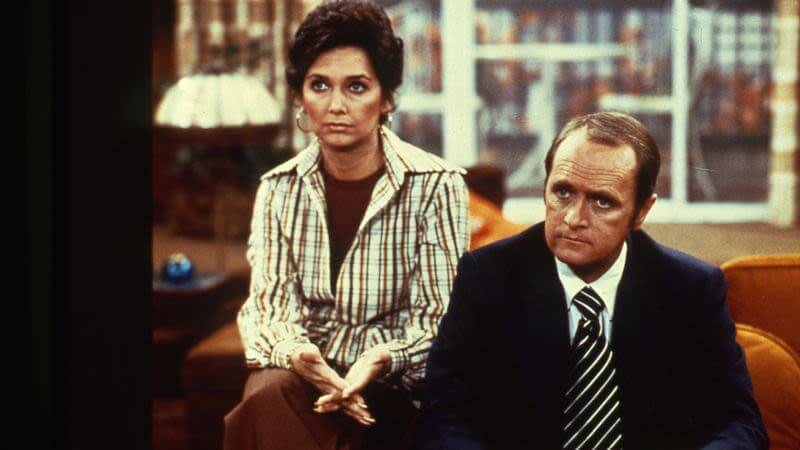
The Bob Newhart Show might be the driest American sitcom to ever attain anything like major success. While the show was buoyed by running after for much of its run, making it more of a beneficiary of a good time slot than a breakout hit, in some ways, Bob Newhart has aged even better than that series. Mary Tyler Moore was more historically important, but the center of the show is the uneasy tension arising from the increased entry of women into the workplace in the ’60s and ’70s, which gives the series a certain quaintness in 2014. Bob Newhart—produced by MTM Enterprises, the studio behind Mary Tyler Moore—is about the perils of trying to lead a mentally sound and fulfilling life in the morass of modern society. It’s a subject that will never go out of fashion—even if the series’ ’70s trappings and outfits seem occasionally ridiculous. []
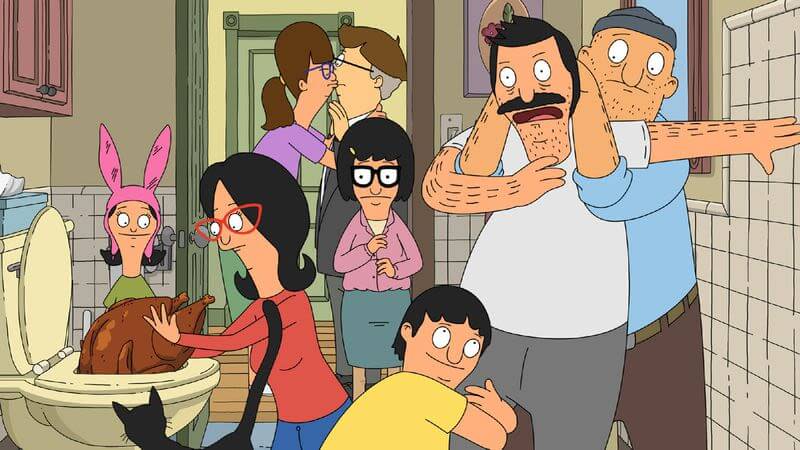
Though it borrowed its basic setup from its smugger, more cynical Animation Domination cousins, there’s little smugness or cynicism to be found watching Bob’s Burgers. Loren Bouchard and Jim Dauterive’s iteration of the adult animated sitcom steers away from the sarcasm and topicality that defines some of its peers by balancing surreal comedy and zany antics with levity and genuine warmth—a callback to the early days of The Simpsons and King Of The Hill. The Belchers’ intra-family dynamics, and eccentric brand of unconditional love for one another make this winning comedy worth revisiting over and over. Not to mention it has one of the weirdest, most wonderful catalogs of original music in animation to date. []
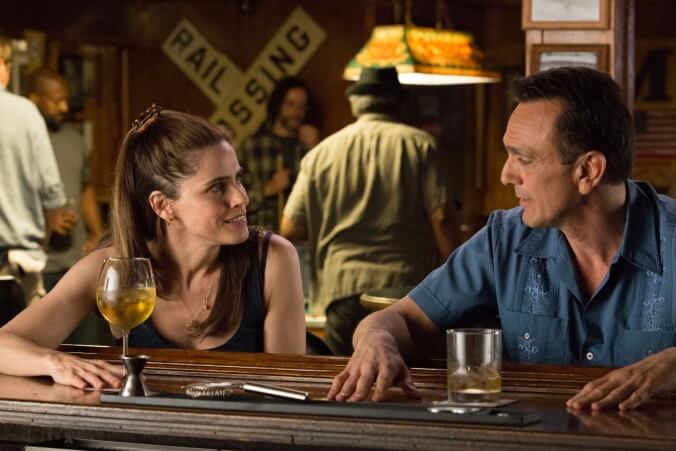
It’s neither dramatic nor unreasonable to suggest that we are currently living through unstable times when the future has never been more uncertain. It’s easy nowadays to draw the shades and retreat from the world, just when it needs us the most. Brockmire began its four-year run with its title character doing just that following his public humiliation in the broadcast booth. He withdrew from society to drown his feelings in drugs and drinks, only to return and find his life in the same shambles where he left it. With its last episodes, Brockmire makes a radical pitch right as our reality hurdles toward dystopia: Don’t run away. Find or create communities of loved ones, try to shape the world in any minor way, and cherish the moments of anticipatory calm before the proverbial crack of the bat. Brockmire, the show that started as a throwaway , fervently argues that life might be short, but there’s still some time. And despite all evidence to the contrary, you’re going to want to see what happens next. []
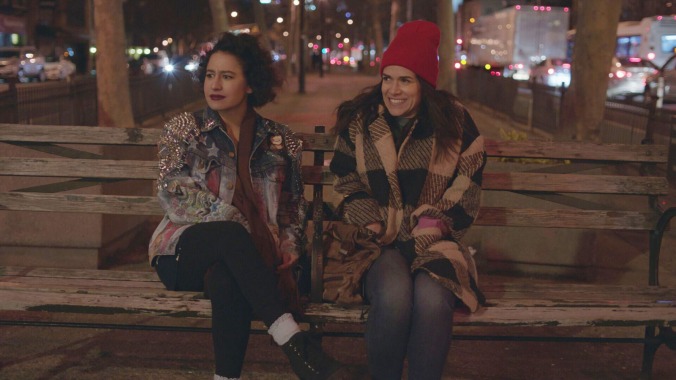
Right as television viewers were clamoring for greater visibility of female friendships, Ilana Glazer and Abbi Jacobson came bearing best-friend tales of destination weddings, FOMO, pegging, and, at one hilarious point, Blake Griffin. The five-season riot showed friendship at its most intimate, when two women love each other unabashedly enough to walk briskly into some of the wildest shenanigans, arms linked. But what made Broad City truly resonant was how it always kept Abbi and Ilana’s loyalty to one another at its center. The hijinks—as funny as they were—were never a crutch. They were tools that emphasized just how much this friendship could survive. []

One of the 2010s’ funniest sitcoms is also one of its simplest: a throwback workplace comedy, set at New York police station populated by a lovable cast of eccentric cops. Brooklyn Nine-Nine quietly exemplifies the way diverse casting can produce better television, with characters whose eclectic backgrounds generate fresh comedic ideas—and thereby deepen the audience’s affection. Brooklyn Nine-Nine crams in more visual gags and one-liners into a single episode than some series scatter across an entire season. It’s also surprisingly plotty, with crime stories that function as legitimately gripping mysteries. As consistently excellent as it is unpretentious, this show is one of the era’s purest pleasures. []
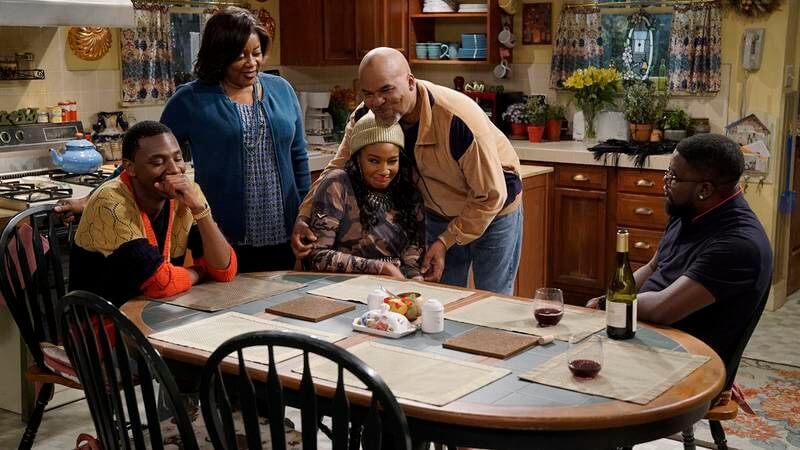
It’s not just that the six-episode first season of The Carmichael Show features refreshingly frank discussions about race, politics, guns, and religion, all within a working-class North Carolina family; it’s also very funny. What makes the show work is that Carmichael and Stoller don’t just type their cast as “conservative,” “Christian,” “militant,” etc. They understand that real people represent a mix of opinions, based on what they believe from minute to minute to be in their self-interest. (The self-described Democrat played by David Alan Grier says that he voted for Bush because of the stimulus check, adding, “You can bomb whoever you want so long as you send me $1,600.”) []

Of all the American sitcoms produced in the 1980s, Cheers feels most like a culmination of what was going on in the ’70s. It’s as if the show took the basic precepts of an MTM show like or , then honed them to the sharpest possible point. Every element was perfectly calibrated for maximum comic value, every cast member precisely chosen, and each character played a specific role within the ensemble. Even the show’s barroom setting seemed calculated. And yet Cheers never felt dry or airless. Creators Glen and Les Charles built a show about a gang of lovable losers, much like they had learned to do while working on . But the central device of the will-they/won’t-they romance would never be done better. Ted Danson and Shelley Long hooked up, then broke up, then hooked up again, and Cheers somehow made it enthralling every time. Some of that may have been due to co-creator James Burrows—unquestionably the most influential multi-camera director in television history—who kept the pace light and effervescent and gave Cheers a sense of elasticity that allowed it to survive even the departure of Long, a move that effectively cleaved the show into two different series. The first is a witty romantic comedy about a dunderhead and the bright barmaid who tries not to love him; the second is a more traditional workplace farce. Both are terrific. []
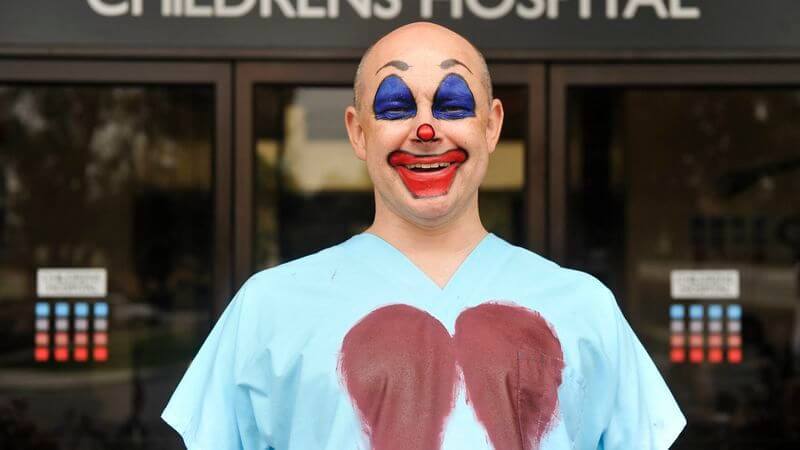
An Adult Swim cartoon that just happened to be live-action, Childrens Hospital was an elaborate parody of hospital shows (and cop and lawyer shows) set in a children’s hospital in Brazil that prominently featured a clown doctor who valued “the healing power of laughter” over medicine. The satire also went so far that it occasionally became a show within a show, with the actors playing fictional actors who played the characters on Childrens Hospital. []

It can be easy to forget how great Community was. The off-screen accounts that plagued the show during its run—threats of cancellations due to underwhelming ratings, ousted and re-hired showrunners, unruly/exiting stars, dysfunctional writers’ rooms, Yahoo! Screen—often overshadowed its on-screen greatness, shifting the narrative surrounding the show from one about its genre-jumping, cultishly adored “anything goes” attitude toward ensemble comedy to one about beating the odds and constantly fighting for survival (Dan Harmon and his team of writers, ever the fans of meta-commentary, undoubtedly ). Either way, Community remains a seminal piece of television, one that embraced absurdity, parody, and drama equally and influenced the sitcom landscape of the 2010s along the way. []
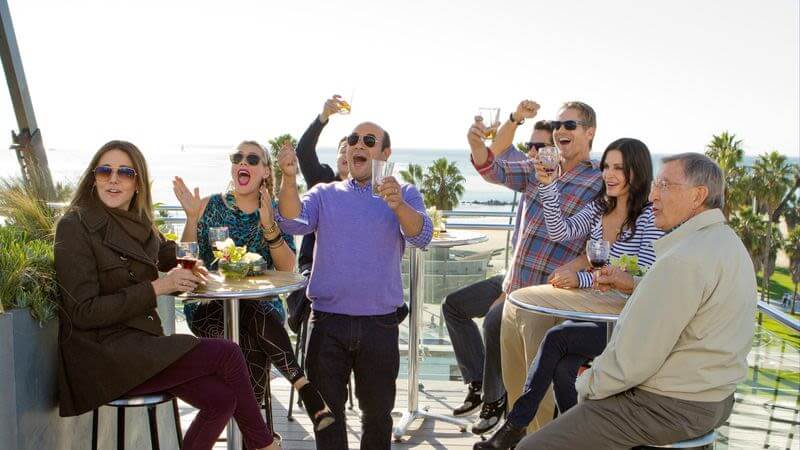
At the center of what is affectionately known as the “Cul-de-sac Crew” (named for the enclave in which many of the show’s characters live) is Jules Cobb (Courteney Cox), who at the start of the show is a recently divorced mother. Co-creators Bill Lawrence and Kevin Biegel initially conceived the show as a star vehicle for Cox after coming up with the title as a gag inside the writer’s room of Scrubs. But attempts to make the show work as a literal interpretation of the title yielded instantly unsatisfying results. Only by repositioning the series as a meditation on adult friendship (and copious amounts of wine) did it start to find itself. []
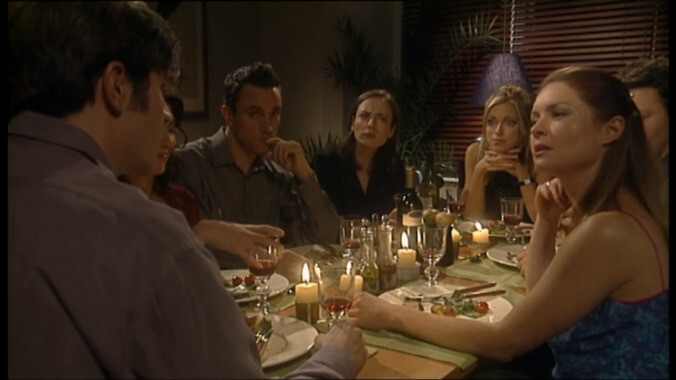
Six thirtysomething Londoners examine the steamy side of relationships in a show that’s like one of those innumerable clones launched in the States in the ’90s, except, you know, good. Many on this side of the pond may only know Coupling from the deplorable American remake. Wipe the horrific memory of that sinking ship from the mind and embrace this witty, wonderful series. The show started out examining the relationship between Steve (based on show creator and writer Steven Moffat) and Susan (based on Moffat’s wife, producer Sue Vertue) and eventually branched out to develop an even more interesting relationship between self-deprecating Sally and arrogant Patrick. Sure, it’s reminiscent of Friends, but Coupling is a bit darker, and usually delves more deeply into sex than romance. Fans of will appreciate the show’s experiments with concurrent plotlines and flashbacks. []

Designing Women followed the lives of Julia Sugarbaker (Dixie Carter), Suzanne Sugarbaker (Delta Burke), Mary Jo Shively (Annie Potts), Charlene Frazier (Jean Smart), and Anthony Bouvier (Mesach Taylor) as they ran an interior decorating firm in Atlanta and simultaneously took on nearly every major social issue of the day. The series, which ran from 1986 to 1993, was written by the great Linda Bloodworth-Thomason, whose by former CBS president and serial sexual harasser Les Moonves, on account of his personal distaste for mouthy women. While everyone in the ensemble cast was fantastic—particularly veteran character actor Alice Ghostley—one of the things the show is best remembered for is the passionate feminist rants of one Ms. Julia Sugarbaker, a woman who did not know the meaning of the term esprit d’escalier. []
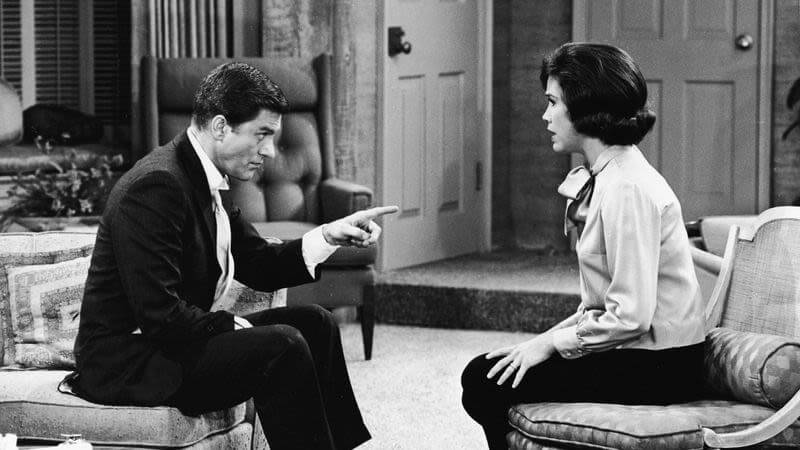
Forty-five years before Tina Fey’s 30 Rock, series creator Carl Reiner used his experiences as a writer-performer on Your Show Of Shows for the basis of the most sophisticated situation comedy of its day. For five seasons, beginning in 1961, Rob Petrie (Dick Van Dyke) brainstormed with his fellow writers over the script of the next Alan Brady Show, braved the raging tantrums of his fire-breathing boss (played by Reiner himself), then came home to the suburban Eden presided over by his ex-dancer wife, Laura (Mary Tyler Moore). The first great upper-middle-class sitcom, The Dick Van Dyke Show still feels fresh, thanks to smart writing and the talent and teamwork of a perfectly balanced cast of young up-and-comers and hammy old pros. The chemistry between Van Dyke and Moore set the standard for later sitcom couples: They were probably the first husband and wife on a TV comedy who were really sexy together. []
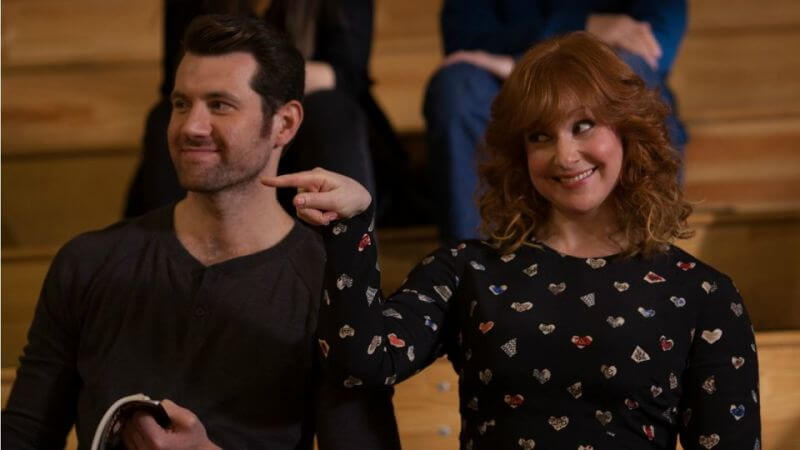
Julie Klausner and Billy Eichner, comedians and stars of Difficult People, play Julie Kessler and Billy Epstein, struggling wannabe comedians, writers, entertainers… and whatever else pops into their heads. The two attempt to make their dreams come true in New York, only to constantly sabotage themselves with their own short-sighted, self-obsessed failings. While Julie is supported by loving boyfriend and PBS employee Arthur (James Urbaniak) and deals with her overbearing mother (Andrea Martin), Billy waits tables for a boss that can’t stand him (Gabourey Sidibe) and works his way through through an ongoing assembly line of guys. The two continually end up right back with they started after their efforts—though usually none the wiser for their ordeals. []
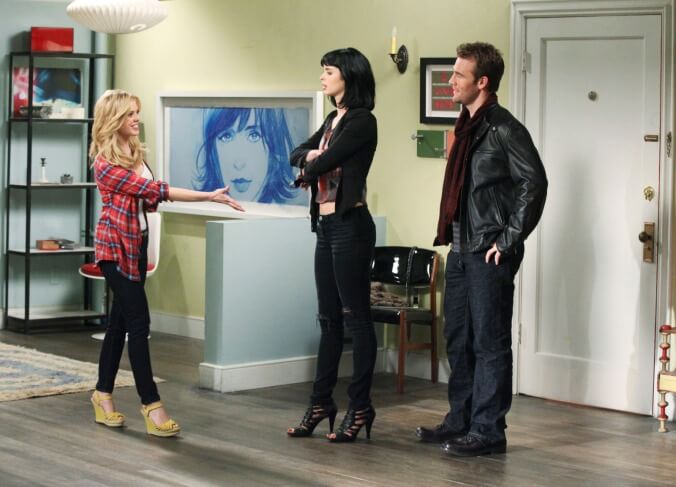
A fresh-faced optimist (Dreama Walker) moves to the big city and immediately learns that she’s in way over her head. Her roommate (Krysten Ritter) is a party girl sociopath whose favorite thing is to create chaos with her ex and best friend, James Van Der Beek (James Van Der Beek). Chaos and depravity ensues. It’s a familiar premise for a sitcom, but Don’t Trust The B is a sharp and absurdist treat thanks to showrunner Nahnatchka Khan (, ) and her talented cast. Krysten Ritter is perfectly wicked as agent of chaos Chloe, Walker is so much funnier than she needs to be as the show’s requisite wet blanket, Eric Andre keeps it weird even as a bewildered straight man, and Van Der Beek’s best role to date is this hyperbolic version of himself. You could do a lot worse than spend a day basking in the acidic charm of Apartment 23’s bonkers tenants. []
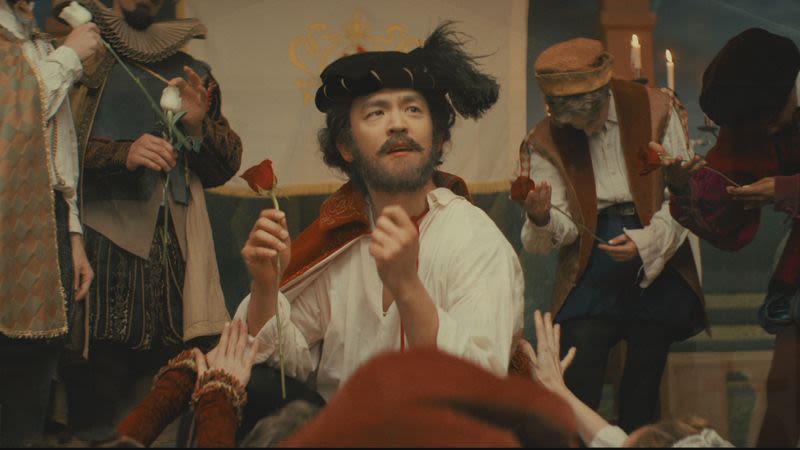
Derek Waters handed a fifth of whiskey to some of the sharpest minds in comedy and turned them into worldly historians. The Drunk History formula, in all its simplicity, has resulted in some of the biggest laugh-out-loud moments in television and despite an endless reel of incredibly synced celebrity reenactments, it made the storytellers the stars. “Harriet Tubman is coming with her army full of bad bitches” should be printed in textbooks across the nation. []
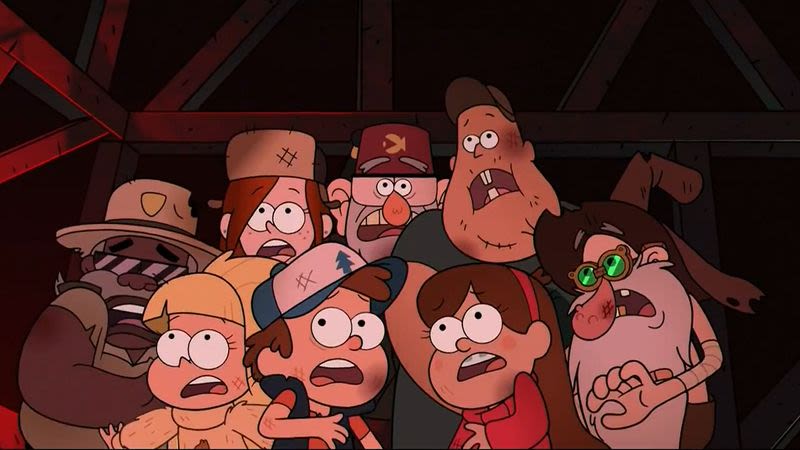
From its inception, Alex Hirsch’s Gravity Falls was built to expand beyond its Disney Channel target demos. With a complex mythology and a deep lexicon of cultural references, there’s sophistication to the show’s epic storytelling that immediately drew the attention of a wider (read: older) audience. But what made its two seasons so special was how the show never abandoned its silliness or its earnest messages about growing up as it explored the very real stakes of its ongoing narrative. This delicate balance ensured the story of Dipper and Mabel’s momentous summer with their Grunkle Stan would not only entertain a generation raised on the show’s cultural influences, but also create a new generation of culturally-savvy viewers with a love for the weird and the witty. []
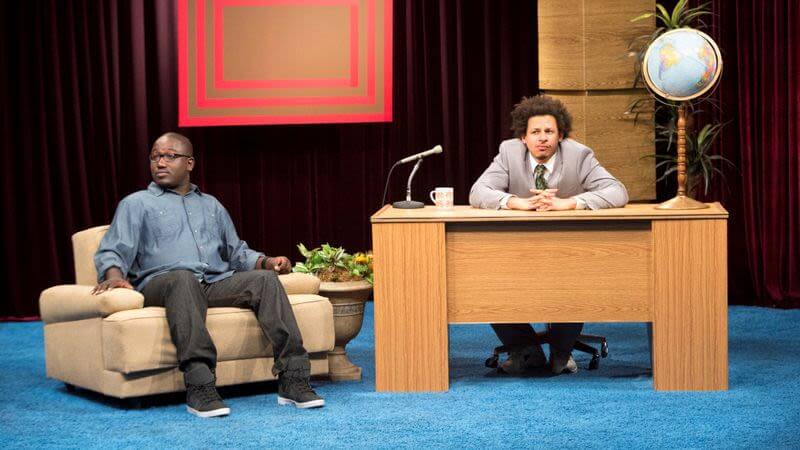
The Eric Andre Show is a testament to television’s gaping maw, an act of creation driven by destruction. The show typically begins with Eric Andre rushing onto his set and tearing it apart. He tackles the drummer and they fall through the backdrop, he pile-drives his desk, and he stomps around in his birthday suit kicking whatever remains. Stagehands replace the furniture as he goes, and the band plays on regardless of his tantrum. Exhausted, Andre slumps onto his chair, a new curtain falls down to disguise as much detritus as possible, a new set squeaks across the floor, and the show begins. The irony at the heart of The Eric Andre Show is that he’s feeding the beast even when he’s fighting it. []
In this autobiographical sitcom from Chris Rock, Rock’s fictionalized self is played by Tyler James Williams in a breakout performance. In the roles of Rock’s flawed parents, Terry Crews and Tichina Arnold set new standards for a TV dad and mom. But as put-upon as the eponymous character might be, Everybody Hates Chris is groundbreaking for its portrayal of a Black family whose lives aren’t just defined by their struggles. []

Susan Harris’ NBC sitcom was a revolutionary show for so many reasons, not least of which was proving that there was life after marriage, careers, and even children. Sixty became the new 20 (okay, maybe 30), as we watched Dorothy, Blanche, Rose, and Sophia deal with what was almost a second adolescence. They struggled to find careers, romance, and general fulfillment. What they found instead were substitute teaching and museum gigs, as well as many men—lots and lots of men. But their suitors were secondary to their friendships; these Girls were really each other’s greatest loves. The series played with that dynamic throughout, teasing just how permeable those boundaries were. []

Part of the genius of Futurama is the show’s ability to simultaneously grasp the seemingly disparate concepts of fantasy and inevitability. This is a show about a year 3000 when intergalactic travel is possible (and easy), where humans mingle with other species as a part of everyday life, where a boy can have a robot for a best friend and a talking lobster for a doctor. It’s also about a year 3000 when there are suicide booths on every corner; where everyone is assigned a job they’re stuck with for the rest of their life; where lightsabers are just an easier way for the cops to beat the shit out of you; and where everyone is a bit too busy to give a rat’s ass about your personal problems. Strip away the sci-fi trappings and the future Philip J. Fry discovers is, well, not all that different from our today. A little crazier, a little more dangerous, but some things don’t change. People are people, even when they aren’t. []
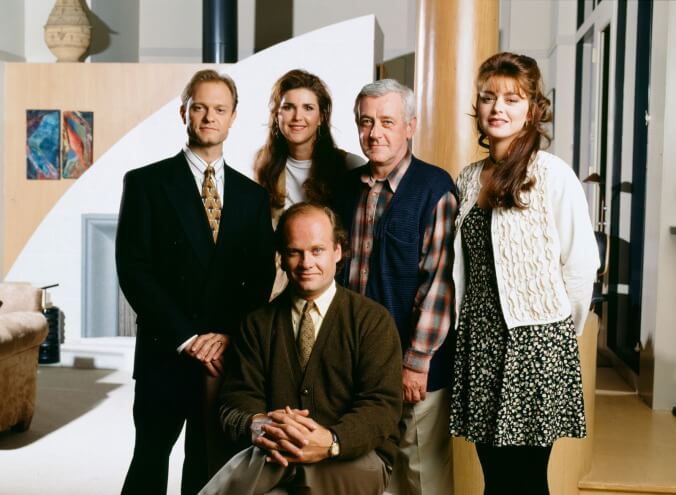
Steeped in the memory of one of TV’s greatest ensembles, Frasier was inherently familiar. When it debuted on September 16, 1993, its charms were immediately recognized, even if the premise was hardly groundbreaking. Workplace humor had bled into family-centered sitcoms in the past, and trumpeting your lead character’s multiple divorces was hardly taboo by the mid-’90s. Frasier’s theatrical staging, which turned most episodes into 22-minute plays, and innuendo-filled farcical humor were inspired by Norman Lear’s oeuvre and series like Three’s Company and Fawlty Towers, respectively. But, as Frasier and his equally snooty brother would argue—and the show’s five consecutive Outstanding Comedy Emmys might contend—the classics are never out of fashion. []
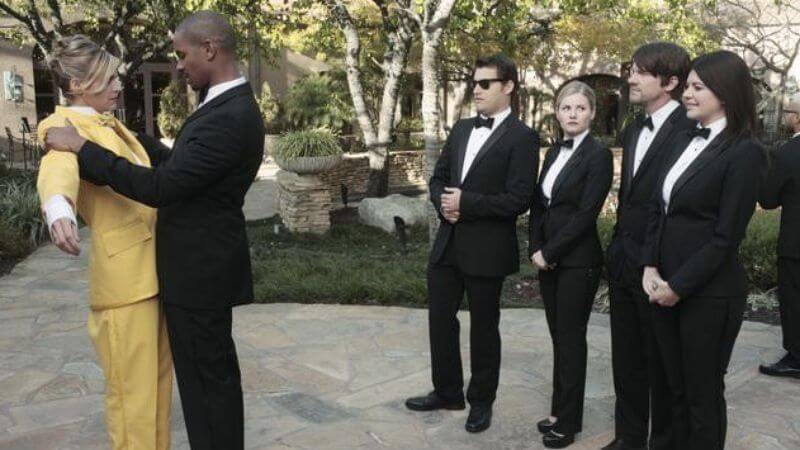
Many hangout sitcoms have tried to replicate Friends’ cast chemistry and, let’s face it, ratings success. Happy Endings certainly never achieved said ratings success, but the chemistry between its cast remains one-of-a-kind to this day. Unlike Friends, the series openly acknowledged how its characters were terrible people, all in the name of “pile-ons.” Beginning with the rather generic premise of what happens in a friend group when two of your friends have a massive breakup, Happy Endings was quick to reveal its rapid, obscure-pop-culture-reference-heavy style of comedy, whether you watched it in order or not (thanks, ABC). As far as the ratio of jokes per minute, no sitcom has been able to touch Happy Endings since it went off the air. []
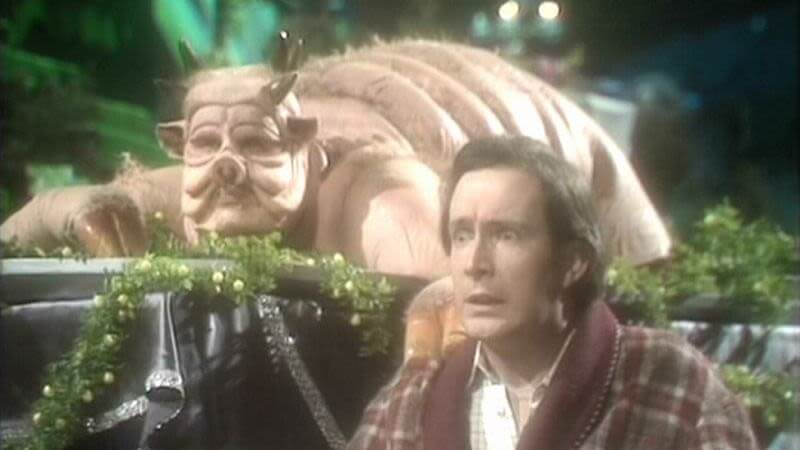
There is no definitive The Hitchhiker’s Guide To The Galaxy—or rather, the “definitive” version of the story is often whichever one an Adams fan encountered first. (And yes, that includes .) What began as a radio show became an album, a novel, a TV show, a stage performance, and a computer game. In nearly every iteration, the premise held fast. An ordinary Englishman named Arthur Dent gets whisked off the Earth just before it’s destroyed by aliens, and hops through the universe with his old friend Ford Prefect, also an alien (and a researcher for the bestselling electronic book The Hitchhiker’s Guide To The Galaxy, a sort of manual for navigating the cosmos and life itself). For most of their adventures, they’re accompanied by rakish two-headed starship pilot Zaphod Beeblebrox, his levelheaded Earthling navigator/girlfriend Trillian, and a hyper-intelligent “paranoid android” named Marvin. []
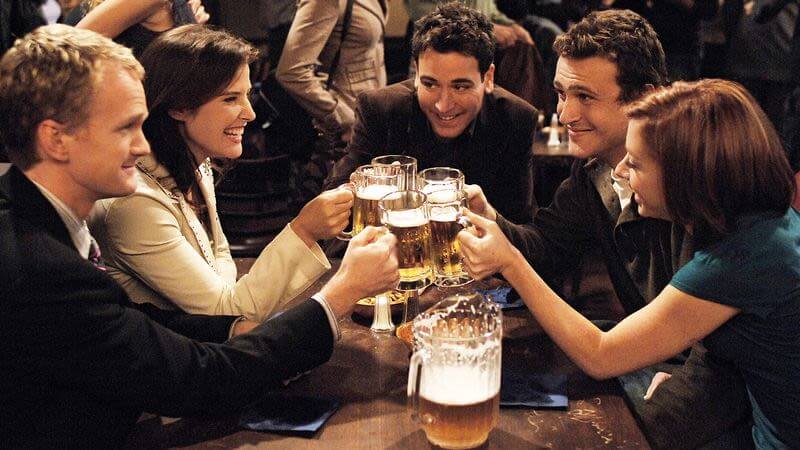
How I Met Your Mother, contrary to its own title, is not about how Ted met their mother. It is about how it is about that. That bracketing “how” needs several descriptive dimensions. Stylistically, it plays with time and memory to conceal and reveal information. Structurally, it nests stories within stories within stories. And thematically, it returns over and over, and with increasing frequency as it nears the end, to a few human experiences. Maturity. Loss. Idealism. Despair. Compromise. Failure. Fate. []
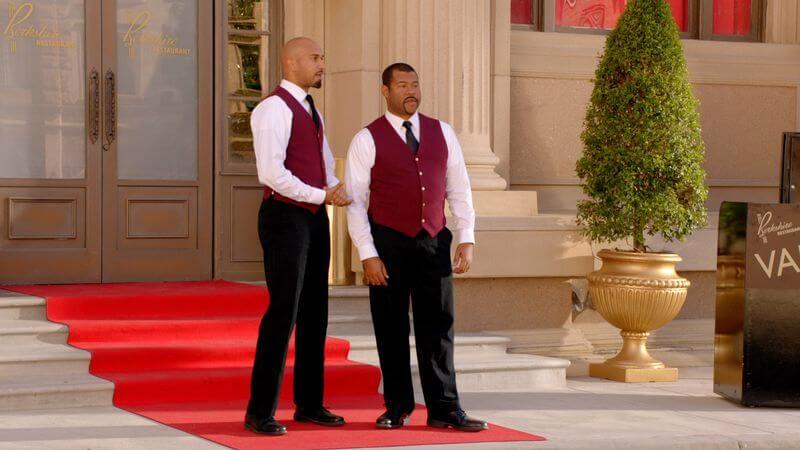
From its opening sketch exploring performative Blackness and masculinity to its devastating final sketch, a musical trip to “Negrotown,” Key & Peele uses every tool in the comedy toolbox to explore and comment on American culture. Pointed political satire, detailed character work, pop culture homage, broad physical comedy, unabashed silliness, and strange flights of comedic fancy, this series has it all. Yes, it’s ridiculously funny, with an incredible hit-to-miss ratio. Yes, it features strong performances from Keegan-Michael Key and Jordan Peele and impeccable direction from Peter Atencio, not to mention the best hair and makeup in sketch TV. What’s most impressive, though, is the versatility and depth of its writing, giving audiences some of the decade’s most indelible comedic characters. It’s most definitely our shit. []
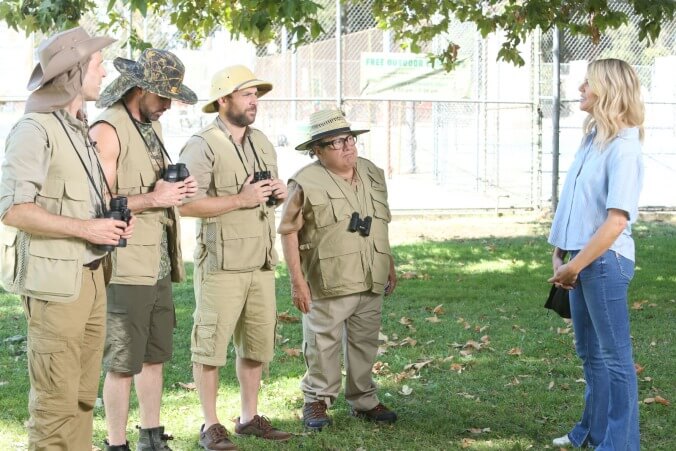
Still wreaking hilarious destruction in its 14th season, Rob McElhenney’s poisoned love letter to his hometown has mirrored the cockroach-like tenacity of its eclectically awful antiheroes, right into the TV record books. Every week the codependent five-headed monster that is Charlie (Charlie Day), Dennis (Glenn Howerton), Deandra (Kaitlin Olson), Frank (Danny DeVito), and McElhenney’s Mac scurry out of their rathole bar HQ to seek whatever satisfactions their collective id requires, and every week Sunny maintains its high-wire juggling act of huge, scabrous yuks, satirical button-pushing, and stubbornly unsentimental character comedy. It’s done it for so long, and so consistently, that this dark-comedy pioneer is easy to take for granted. But do so at your peril, as episodes like last season’s stunningly well-realized finale show how transcendent comedy springs from the foulest trash. []

By 1997, The Simpsons had basically abandoned any pretext of exploring the foibles of the middle-class American family. (There’s really no coming back from .) Thankfully, that was the year that King Of The Hill arrived to fill the void, offering a perennially grounded alternative to the increasingly out-there misadventures of Springfield’s finest. Set in the fictional suburban sprawl of Arlen, Texas, Fox’s second-longest-running animated sitcom remained firmly rooted in the mundane drama of raising a family and running a business. The show was a perfect synthesis of sensibilities: Co-creator Greg Daniels, formerly of The Simpsons and later of The Office, brought a wealth of character-driven comedy, softening without dulling the satirical edge of Beavis And Butt-head mastermind Mike Judge. The result was a show that poked gentle fun at traditional American values—the kind held dear by its hero, sensible and stodgy propane salesman Hank Hill—without stooping to condescension. (In truth, the series skewed slightly more conservative than liberal, reserving its greatest disdain for self-righteous interlopers.) If King Of The Hill never inspired the kind of devoted fanfare visited upon its animated network neighbors, that’s probably because it was, for most of its 13-year run, as low-key and squarely lovable as the proud Texan it portrayed. A “Deep Space Hank” would have betrayed that earthbound appeal. []
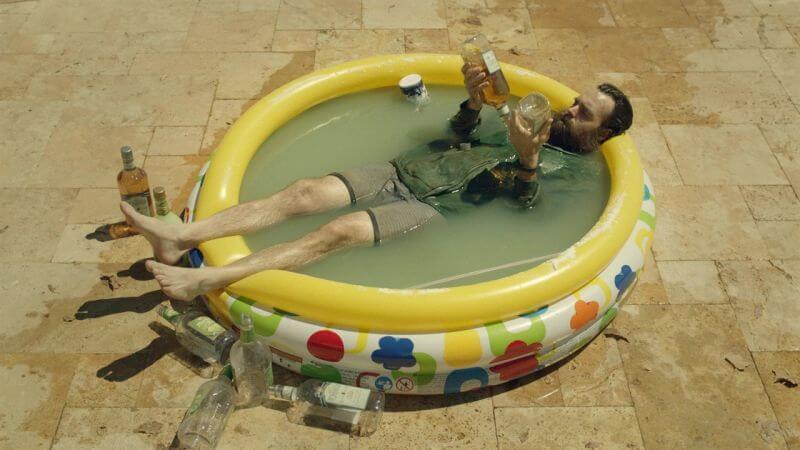
After an unspecified apocalyptic event (referred to only as “The Virus”), one lonely man schemes to turn the dissolution of society to his romantic and sexual advantage. Will Forte’s sheepish appeal makes Phil Miller, the self-supposed last man on Earth, equally pathetic and sympathetic, and Kristen Schaal brings her peculiar charms to the role of Carol, the presumed last woman on Earth and the self-appointed guardian of social order. In weekly half-hours, The Last Man On Earth plays out at a pace that can test viewers’ patience—with the premise, with the slow regrouping in Tucson, with Phil Miller’s naked self-interest, and, paradoxically, with the sheer ineptitude of his ploys. But marathoning the first season’s 13 episodes builds his clumsy attempts at manipulation and his repeated humiliations to peaks of absurdity, making Phil’s unpalatable traits more hilarious than repugnant. []
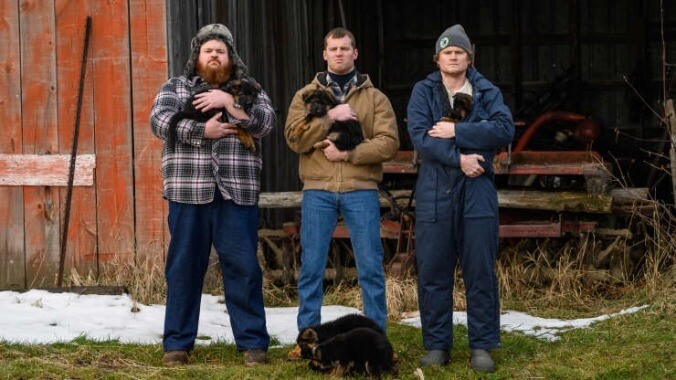
Who knew that the most mellifluous motherfuckers in the English-speaking world were hiding out in rural Ontario? Well, Canadians, of course, as well as those Yanks with the good sense to hang out with the hicks, skids, and hockey players of Letterkenny, population 5,000. The premise of the series is straightforward enough: A gaggle of small-town eccentrics deal with everyday problems. But describing what it’s like to actually watch Letterkenny is a more difficult task. That being said, in the spirit of this linguistically adventurous show, here goes:Letterkenny is like if the gang was into chorin’ instead of pourin,’ a heavily lubricated hangout show powered by Puppers brew and Gus ’N’ Bru that sends its simple farm folk down a silver-tongued slip ’n’ slide delivered in a melodious melange of upcountry accents thicker than the milkshake that brought the boys to the yard. It’s without a paddle, a small-town sitcom that sustains its sweetness even when it spirals into surrealism—and the sex talk is spicy, so send the babies to bed when the boys are bantering. And if you don’t like it? Blame Canada. []
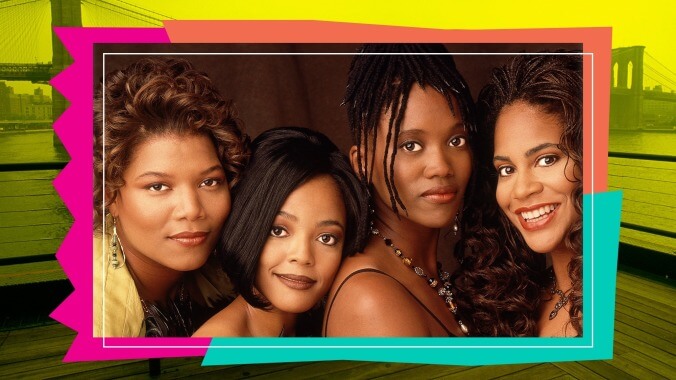
25 years after its premiere, Living Single still doesn’t get nearly enough credit for inventing the urban sitcom format later seen on and , let alone for its cast, an electric (and sexy) ensemble that included Queen Latifah, Kim Fields, and Erika Alexander. The Fox series, from Yvette Lee Bowser (then Yvette Denise Lee), broke ground by following the lives of six black people in the city: an ambitious publisher (Latifah); her mild-mannered cousin (Kim Coles); their imperious friend (Fields); their other fierce friend (Alexander); and their odd-couple neighbors (T.C. Carson and John Henton). Disappointment and success, of the professional and personal variety, filled every hilarious half-hour of this ’90s kind of world. []
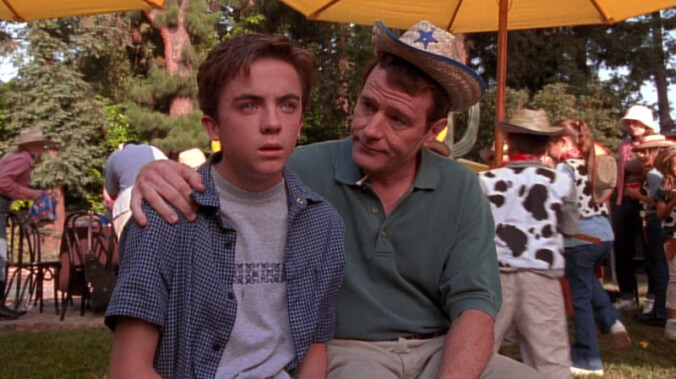
Malcolm In The Middle shares a lot of characteristics with The Simpsons. It’s about a lower middle class family with three children at home (the eldest a trouble-maker, the middle brilliant), a childlike and emotional father, and a mother who has to take on the role of authority figure. While it’s live action, it also has a cartoonish sensibility: comedic set pieces, throwaway gags, and crazy situations are often around the corner. Yet for all that wackiness, Malcolm and The Simpsons have another important trait in common: Both are grounded in a family that feels real. This dynamic of overblown storytelling and human character proved remarkably durable for Malcolm In The Middle and allowed the show to keep rolling along for 151 episodes. []
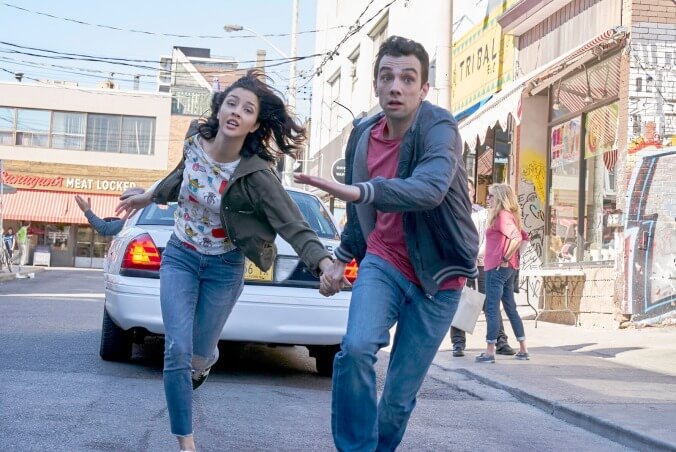
rarely ever rise to more than a delightful diversion (assuming they don’t with their finales). But Simon Rich’s surreal take on the genre—adapted from his short story collection, The Last Girlfriend On Earth—managed to avoid treacle while delivering the winsome story of Josh Greenberg. Jay Baruchel starred as the mumbling everyman, whose romantic exploits were aided and hindered by best friend Mike (Eric Andre). Josh’s ever-relatable quest for love anchored the show’s flights of fancy, including dates with literal trolls and kaiju street fights. As the series went on, it made more room for women—like his sister, Liz (Britt Lower), —and their mother, Patty (SCTV and SNL alum Robin Duke). By the third and final season, the Woman had been found, but the show didn’t lose any of its fantasy or momentum. Katie Findlay’s Lucy was never just Josh’s girlfriend—she was his narrative equal, helping to shoulder the absurdist burden. Man Seeking Woman was more of an ensemble comedy than ever in its final episodes, which made the wedding capper all the more resonant and appropriate. It’s one of few shows that grew up before our eyes. []
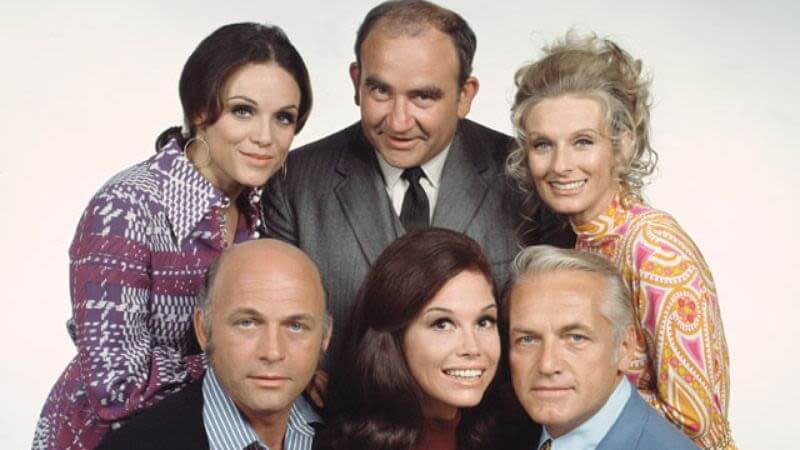
Mary Tyler Moore could have easily done another show like Dick Van Dyke, perhaps told from the wife’s point of view. Instead, she and her husband, executive Grant Tinker, decided to toss things over to James L. Brooks and Allan Burns, two seasoned comedy writers who had attracted considerable attention for their work on Room 222. What Brooks and Burns came up with proved to be unexpectedly revolutionary: Moore would play a single woman, working in the big city (in this case, Minneapolis). She would be emerging from a failed relationship, and the story would be split equally between her work life (at a smalltime TV news station) and her home life (with her friends, not her family). None of this was unprecedented. That Girl was about a single woman, while the work/home split was similar to Van Dyke. But Brooks and Burns’ evolution of the form had more to do with content than premise. [Emily VanDerWerff]
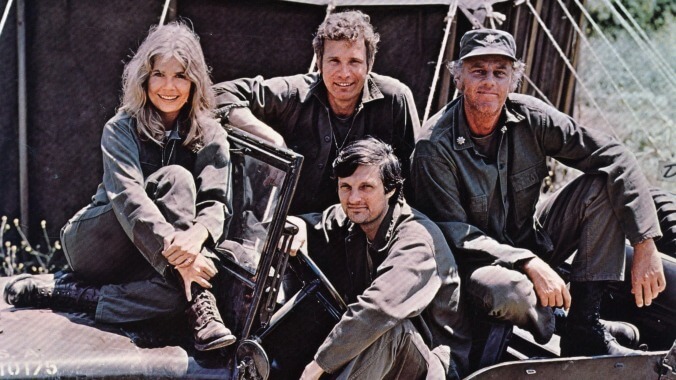
There was no real model for M*A*S*H when the sitcom debuted on CBS in 1972. There had been military comedies, like Gomer Pyle and The Phil Silvers Show, and there had been sitcoms that dealt with more serious, contemporary matters in a realistic way, like Room 222. But M*A*S*H was as different from those as ’s hit 1970 film had been from every wacky comedy and Army movie that came before. The series’ mastermind Larry Gelbart had been a writer in the live TV era of the ’50s, and became a go-to gagman in Broadway and Hollywood during the ’60s. Gelbart’s producing partner Gene Reynolds had been a child star in the ’30s and ’40s, before becoming a respected television director in the ’60s, working on the likes of My Three Sons and Hogan’s Heroes. Like Altman, Gelbart and Reynolds had been around a while before they found the project that launched them into a higher showbiz echelon, and while Altman always claimed to resent the TV M*A*S*H—largely because he didn’t own the property and didn’t get rich off it—Gelbart and Reynolds presided over a show that was as unconventional, honest, and challenging as the movie. They just did it with more vaudeville-schooled savvy. []
The Mighty Boosh masterminds Julian Barratt and Noel Fielding followed a well-worn British comedy-career path, starting onstage before moving to radio and then to TV for three BBC series. The years spent honing their craft before they landed on television have resulted in 20 assured, distinctive episodes of The Mighty Boosh, each reflecting a sensibility that’s been refined in its own weird way. A typical Boosh installment begins with Barratt and Fielding hanging out, trading rapid-fire near non sequiturs like a stoner Abbott & Costello. (In the first season, the conversations happen at the cut-rate zoo where their characters “work”; in the second, they’re at the flat where they obsess over their go-nowhere music career; and in the third, they’re at the second-hand shop run by their drug-dealing shaman roommate.) Then, after a few minutes of half-hearted setup, Barratt and Fielding are off, having surreal adventures that involve ancient legends, talking animals, elaborate costumes, and a few snappy musical numbers. Even when a Mighty Boosh episode isn’t fall-down funny, there’s always something happening. Each half-hour is a journey into Barratt and Fielding’s peculiar headspace. []
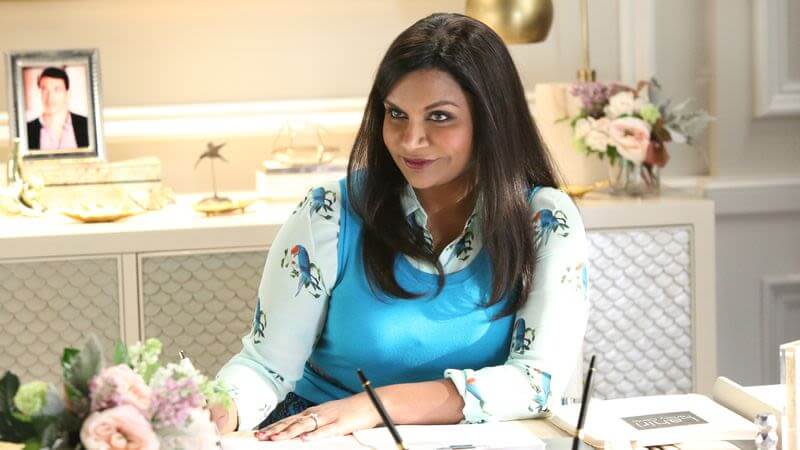
When ended, few would have expected Mindy Kaling to be one of the show’s most successful post-series stars. Kaling was in her 20s (and the sole woman in the writers’ room) when she landed her gig on The Office, not only writing for the show but also playing chatty office assistant Kelly Kapoor, who was forever crushing on dreamy intern Ryan (Kaling’s real-life pal B.J. Novak).The Mindy Project, Kaling’s post-Office series with Fox, was one of those work-in-progress titles that stuck. A longtime fan of romantic comedy, as she’s laid out in her and first book, , Kaling set up her sitcom as a long-form rom-com. While she starts the series hooking up with Hugh Grant-wannabe Jeremy (Ed Weeks), the seeds for her will they/won’t they with Danny (Chris Messina) are planted in the very first episode. For three full seasons, Kaling deftly stretched out the Danny-and-Mindy romance, moving from barely acquaintances to real friends to the most effective comedic romance on TV. []
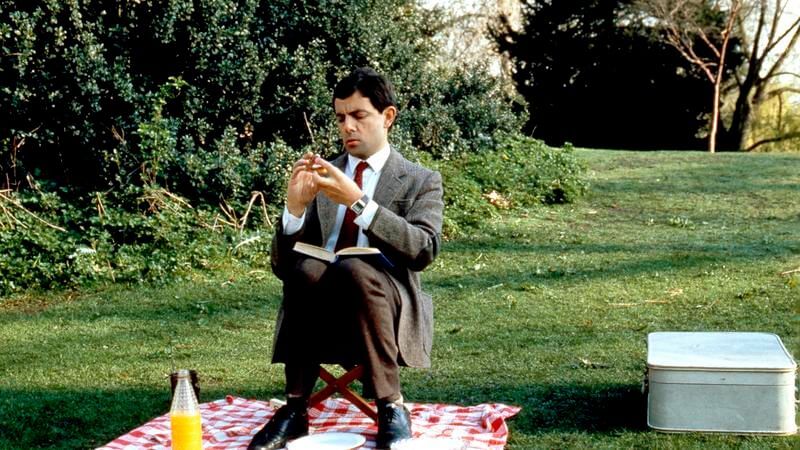
If you were anywhere near a television set in the ’90s, it was impossible to escape Mr. Bean, the face-contorting walking disaster that transformed Rowan Atkinson into an international pop-culture icon. In addition to his original, eponymous British sitcom—which came stateside via PBS, HBO, and Fox Family—Mr. Bean managed to make the jump to feature films (twice), an animated series, books, and video games. He even helped to open the 2012 Summer Olympics with a version of “Chariots Of Fire” as only Mr. Bean would play it (read: ). All of which makes it easy to forget that Mr. Bean, the original series that started it all, ran for a grand total of 14 episodes.Inspired by Jacques Tati’s Monsieur Hulot—another sports-coat-loving troublemaker always at odds with the modern world—Mr. Bean’s very physical style of comedy is appropriately reminiscent of Hollywood’s most iconic silent comedians: Charlie Chaplin and Buster Keaton. Few language or cultural barriers helped Mr. Bean attain a wide comic appeal. But even this silent brand of comedy requires a specific audience. []
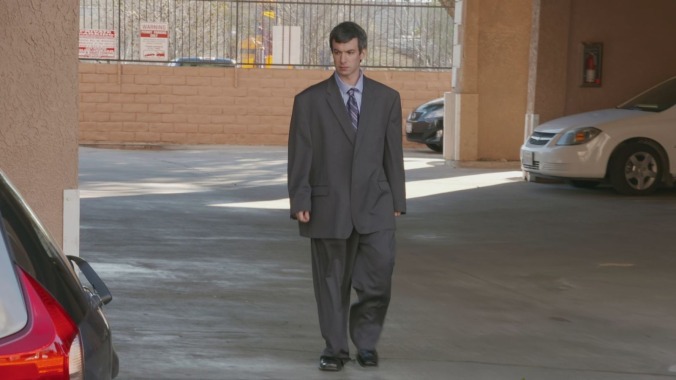
It was inevitable that someone would parody the wealth of business makeover series flooding the airwaves, but who knew that the result would be this? Across four seasons, Nathan Fielder used gags involving poo-flavored yogurt and Holocaust-denying outerwear companies to make resonant points about commercialism, virality, and the extremities of politeness. But it wasn’t the pranks themselves that made the show so much as Fielder, whose vulnerability and general air of desperation tended to either disarm his subjects or unnerve them, resulting in shocking glimpses of humanity both kind and cruel. A bow atop it all was its stunning feature-length series finale, “Finding Frances,” in which Fielder confronted the show’s blurry fourth wall during a road trip in search of a friend’s lost love. []
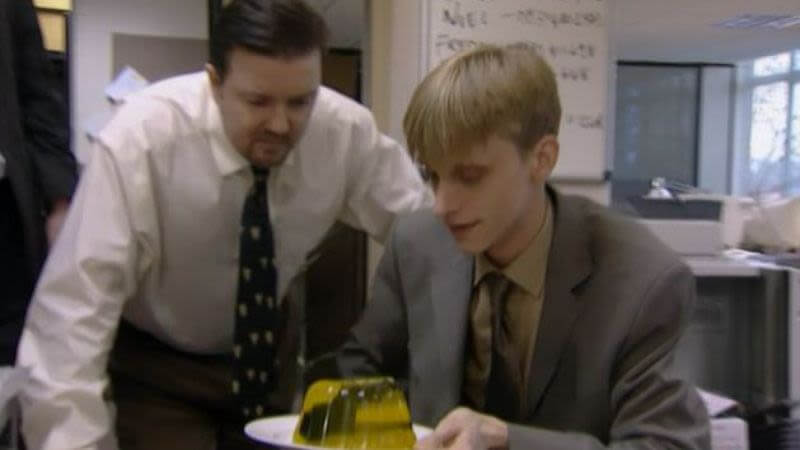
The Office is the most influential TV comedy of the last 10 years and probably the most influential TV comedy since . You could make an argument for Friends or or the of the show or even Everybody Loves Raymond, but most of those shows were reacting to Seinfeld or trying to ape what made this show so great. In just 14 episodes, Ricky Gervais and Stephen Merchant took the standard workplace sitcom—full of will-they/won’t-they romances and wacky hijinks—and brought it slightly more down to Earth. They brought cringe humor into the TV mainstream in a big way. They invented a set of characters that resonated from the very first episode, and they create a full story that leaves at just the right point in time—twice. []
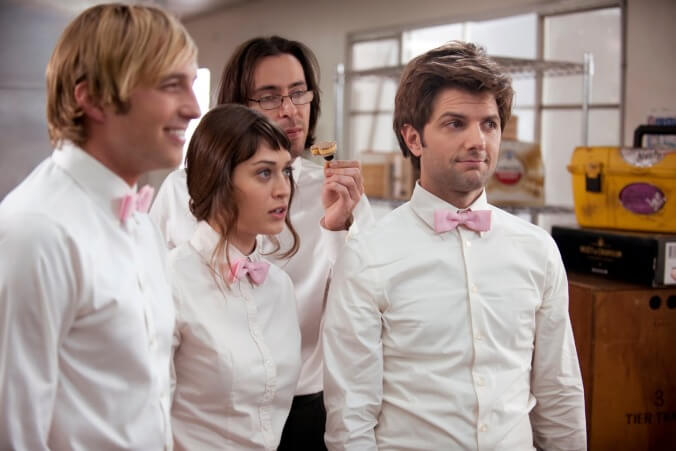
When Party Down premiered, the career paths of its stars—Adam Scott, Lizzy Caplan, Jane Lynch, Ken Marino, Martin Starr, and Ryan Hansen—weren’t dissimilar from the characters they portrayed. In the show and in real life, they were creative types who’d bounced around Hollywood, their greatest successes coming from cult hits (Lynch in the films of Christopher Guest, Marino with The State, Starr on , and Hansen on Veronica Mars) and memorable supporting roles (Caplan in , Scott in ). The long-term detour into catering is where art stops imitating life, but it gives Party Down an ideal, ever-changing backdrop for its characters’ artistic frustrations, petty squabbles, furtive romances, and skillful use of profanity. []
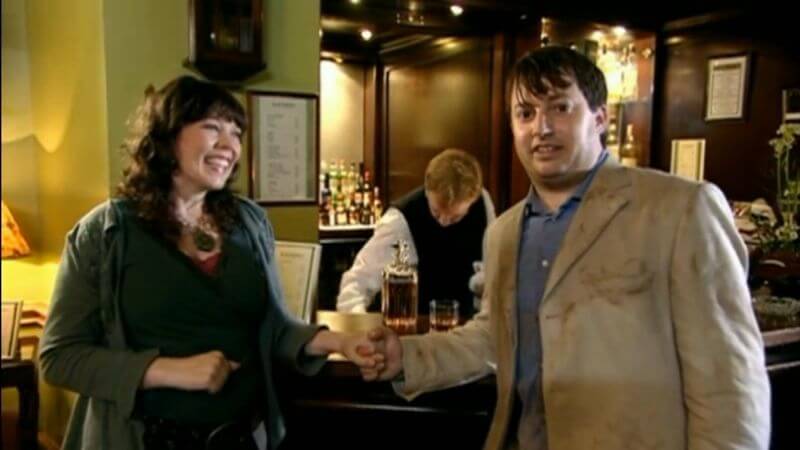
Both David Brent and Larry David lack self-knowledge, which is what makes them so dangerous to themselves and others. That’s not Mark Corrigan’s problem. Mark is an intelligent, reasonably capable guy who can’t turn off his hyper-awareness long enough to relax for a second. He’s got a penetrating, ruthless, vicious wit that a lot of comics would kill for, and even when he’s only using it to entertain himself—for those of you who are new to it, this show is very big on voiceovers—he feels bad about it, as he does about most things that make him feel good. There’s a moment in the second episode that sums him up nicely, when he gets in an elevator with someone who’s only going up one floor, and says something catty about how this is a waste of the elevator. Then the doors open, and his new friend gets out, walking with a pronounced limp. Mark, naturally, feels guilty, and tries to make himself feel better by rationalizing the situation so that the guy with the limp is the bad guy. But as soon as he thinks to himself, “People like him should wear stickers. They’ve got them for cars,” he turns his ammunition on himself: “Good idea, Adolf!”As Mark, David Mitchell turns himself into a live-action cartoon: shiny dark eyes that can look as big as those in a Walter Keane painting, but that communicate panic instead of cuteness; a tremulous lower lip that overpowers his weak chin and that, as his mouth dries up and he fights harder to find the words that will cancel out his latest verbal indiscretion, shimmies like that of a Graham Chapman character in the throes of revulsion. He’s a superbly funny caricature of a kind of nerd, a history buff who has a solid job and could enjoy his leisure time playing with the toys he buys with his earnings—big books on Stalingrad and suchlike—if he didn’t feel a sort of obligation to have a sex life, maybe even find the right girl. His flatmate, Jeremy (Robert Webb)—known to his friends as “Jez”—is considerably lower on the evolutionary scale, a would-be musician with grand daydreams and not a discernible speck of talent. []
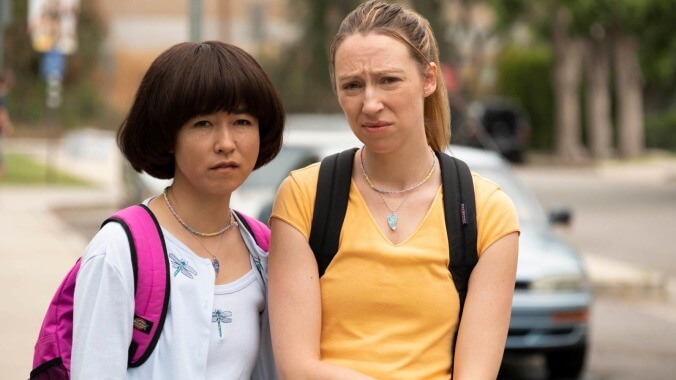
The first season of this Hulu comedy from Maya Erskine, Anna Konkle, and Sam Zvibleman was marked by bravura performances from its two leads, Erskine and Konkle, who essentially play their tween selves. When Pen15 begins, it looks like a promising idea for a sketch, but gradually becomes a raunchy and moving look at puberty and family, as well as a testament to the indefatigable spirit of young women, particularly ones who are big fans of the Spice Girls. The success of this oft-unhinged comedy hinges on Erskine and Konkle, who make reliving your adolescence look like the best and worst of times. Their utter commitment to these roles and this premise smooths over any bumps early on, as the two actors manage to turn back time with little more than slumping posture, bright-eyed stares, pastel polos, and hip-hugger jeans. Season one improves as it goes on, and is even better upon rewatch, which we suppose makes it a grower, not a show-er. []

Josh Thomas anchors this sweet, short-lived dramedy as the endearingly gawky Josh, a young gay man who’s as directionless as he is lovelorn. It’s not Please Like Me’s storylines that are groundbreaking, but its low stakes—there’s no burden of representation here, just a universal story about a group of queer and straight friends looking for love. []
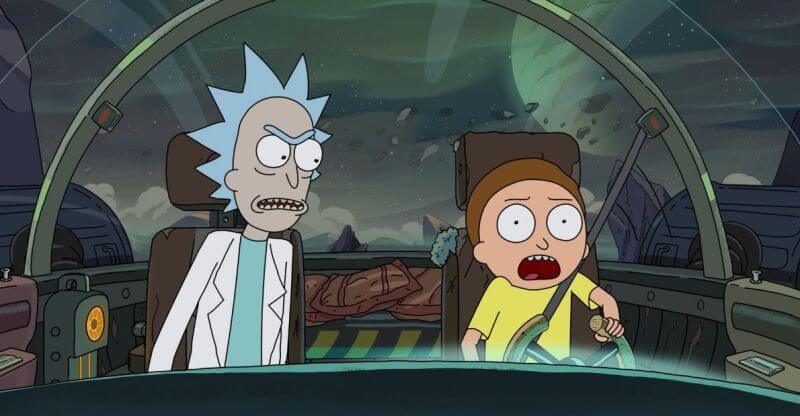
Springboarding from a deliberately lowbrow comic concept (what if Back To The Future, but gross and mean), Justin Roiland and Dan Harmon’s animated universe quickly expanded to encompass the deepest reaches of scatological hilarity, existential dread, and Grant Morrison-worthy sci-fi weirdness. Roiland voices both Rick Sanchez (the universe’s smartest—and thus most contemptuous—mad scientist), and Morty (Rick’s painfully ordinary 14-year-old grandson/sidekick), while Community creator Harmon’s infamously Rick-like genius helps cantankerously steer the duo’s cosmic adventures in mind-bending rings around both sitcom convention and sci-fi cliché. Roping his extended family into schemes involving multiple realities, multiple Ricks, and yawning, nihilistic despair, Rick is both Roiland and Harmon’s celebration and deconstruction of the loneliness of ultimate genius, while still finding room for the occasional genocidal musical fart. []

grew out of the dream of a legendary television entertainer who became a culture hero to his generation. That man’s name was Johnny Carson, and his dream was to take more vacation time from The Tonight Show. To this end, Carson sought to increase the value of his own reruns by instructing NBC that he was no longer good with affiliate stations being allowed to air them on weekend late nights. This development reignited the daydream some at the network had of colonizing that patch of broadcast real estate with original programming. That opened the door for two guys who formed an uneasy alliance based on their shared identification as members in good standing of the Baby Boomer generation: 30-year-old writer/comedian-turned-producer Lorne Michaels, and 28-year-old NBC executive Dick Ebersol. Though Michaels and Ebersol were still pretty young, they weren’t as young as they used to be, and they’d figured out that other members of what used to be called “the ’60s generation” might feel like spending part of a weekend evening sitting at home, watching the kind of entertainment they’d always had to seek out at concert venues and comedy clubs.Allegations that SNL isn’t funny anymore, which go hand in hand with charges that it’s “lost its edge,” date back at least as far as 1979, when that cutting-edge journal of the electronic arts TV Guide ran an article called “Saturday Night Moribund.” (Yes, plays on the show’s name go back at least that far, too.) When really old people make these charges, they mean that SNL has lost the freshness and counterculture vibe it had in the mid-’70s. But it had that vibe because it was a necessary component to connecting with its target audience then. As the show became more successful, it became bigger, less intimate, and splashier, but it has also changed to fit the times. At some point it turned into an institution, and institutions are conservative by nature. That doesn’t mean the show’s politics became conservative, though that’s sometimes been the upshot of its efforts to embody, and never challenge, the zeitgeist. (The story that Lyndon Johnson looked up from the evening news and announced that he knew he’d lost Middle America on the Vietnam War because he’d lost Walter Cronkite is apocryphal, but it’s true that people in the first Bush White House breathed a sigh of relief when they watched Saturday Night Live during the 1991 Gulf War and saw that, rather than satirizing the rationale behind the war, the show was doing sketches harshly ridiculing dumb ol’ reporters who thought they had any business asking questions about it.) []
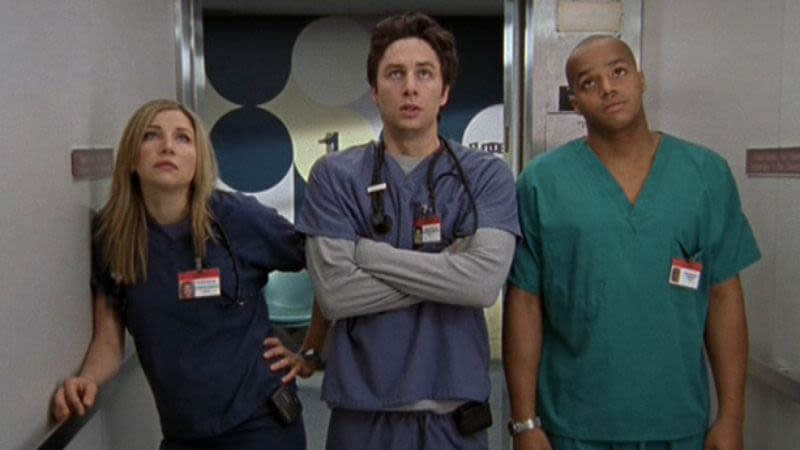
Nineteen years since it debuted, it seems clear that is a pivotal show in recent television history, even if it lacks the lasting popularity of or the acclaim of , two shows it bridged to a certain extent. The show was set at the Sacred Heart teaching hospital, and mostly followed a group of medical interns—referred to as “scrubs” because of their uniforms—as they struggled to put their newly completed education to use. Zach Braff, in his breakout role, starred as John “J.D.” Dorian, a competent doctor, goofball, and extremely emotional guy. J.D. forms relationships of desperate intensity with everyone around him: best friend and surgeon Turk (Donald Faison), professional rival and on again/off again love interest Elliot Reid (Sarah Chalke), and most intensely, chief resident Perry Cox (), who J.D. makes a mentor and father figure over Cox’s overwhelming opposition. (J.D. can’t do this all on his own—.) Surrounding them are nurse Carla Espinosa (Judy Reyes), who’s the hospital’s most efficient employee; Bob Kelso (Ken Jenkins), Sacred Heart’s penny-pinching and gleefully dickish chief of medicine; and an unnamed janitor () with an unwavering and mostly undeserved grudge toward J.D. []
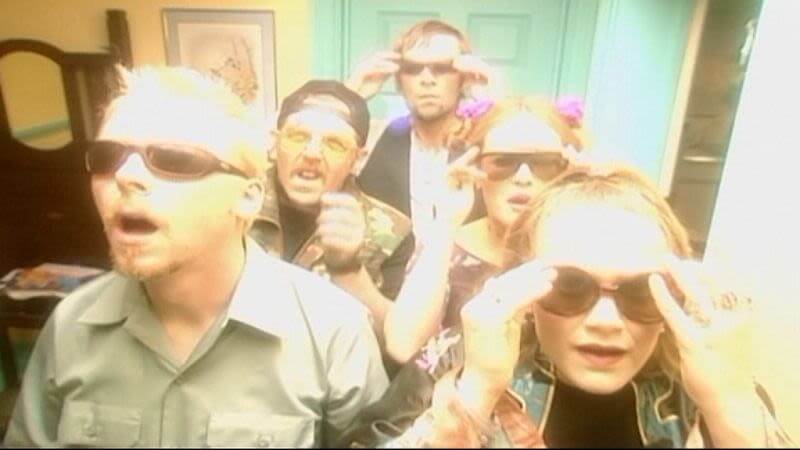
Comic-book artist Tim and freelance writer Daisy meet cute when she thinks he’s a weed dealer. They pose as a couple in order to rent their dream flat and have to navigate their relationship, a cast of misfit friends, and a conveyor belt of pop-culture references. The easy chemistry of writers and stars Simon Pegg and Jessica Hynes, with an assist from Nick Frost as Pegg’s gun-nut bestie, makes the perfect platform for the show’s running jokes, stunt cameos, pop-culture homages, and cutaway gags. (Style-wise, it’s essentially an intro course on the developing style of director , who would soon merge with Pegg and Frost to create an unstoppable nerd juggernaut). But while the usual sitcom elements are in play, there’s room for beats of earnestness, a refreshingly messy leading lady, and one of the best finger-gun fights in TV history. []
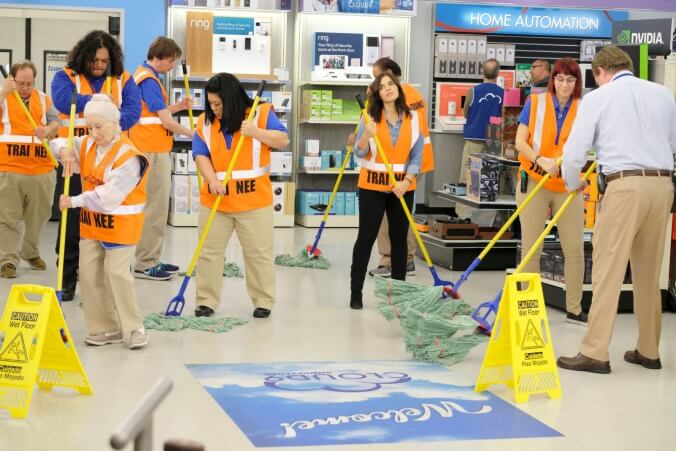
The retail employees of Superstore have survived to one of the sweetest spots of a sitcom’s evolution, when the characters have come into focus, the cast chemistry is properly calibrated, and the writers can start harvesting the crops of storylines they planted in the show’s earliest stages. In season four, that meant heartwarming (and occasionally quinceñeara-ruining) romantic payoff for Amy (America Ferrera) and Jonah (Ben Feldman), but it also meant a streak of winning episodes whose big laughs arrived on the surface of long-simmering, deeply relevant plots about the whole Cloud 9 crew. Sometimes those plots involved a lurking Easter Bunny or the disappearance of a whole cage full of exotic birds, and sometimes they involved labor organization and draconian immigration policy. Whatever directions the season went, it all embodied the spirit it went out with, as the staff rallied to show they’re a force greater and more resilient than the building that brought them together—a fitting exclamation point for creator Justin Spitzer and his time as showrunner. []
Centered around the employees of the Sunshine Cab Company—who viewed driving a cab as a placeholder for a better life that never quite materialized—Taxi is one of the greats of the sitcom form. It has one of the most talented casts ever assembled—including Judd Hirsch, Danny DeVito, Marilu Henner, Andy Kaufman, Christopher Lloyd, and Carol Kane—and the old-school multi-cam vibe of a story that’d be right at home on the theatrical stage. []
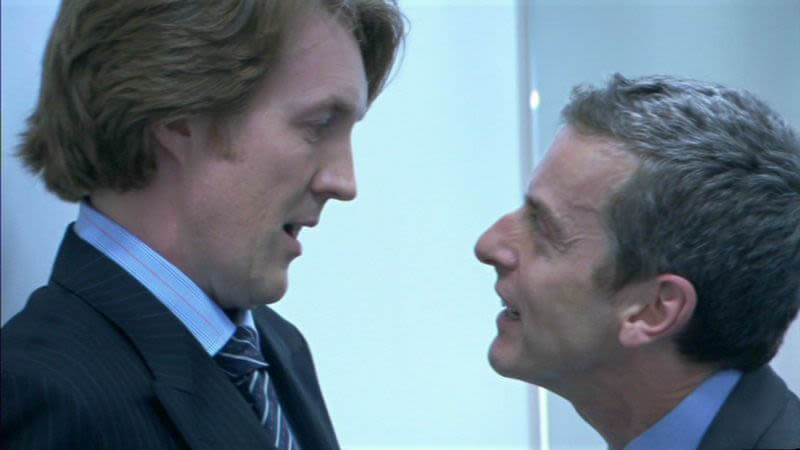
The foibles of British government, exposed with painful clarity. The show follows a fictional ministry—The Department Of Social Affairs And Citizenship—as it manages to accomplish exactly nothing, but participates in the spin, manipulation, and grandstanding that characterizes the modern political process. It’s bitingly funny and alarmingly prescient—so much so that the it actually predicted a few real-life political kerfuffles in Britain. Peter Capaldi’s Malcolm Tucker is a foul-mouthed spin-doctor who delights in excoriating stupidity. Fortunately for viewers, in DOSAC, that stupidity is everywhere. Despite its general look as a workplace comedy, it’s a complex, intelligent satire of bureaucracy, and it spares no one in its path. Creator Armando Iannucci went on to create for HBO after the success of this show. []
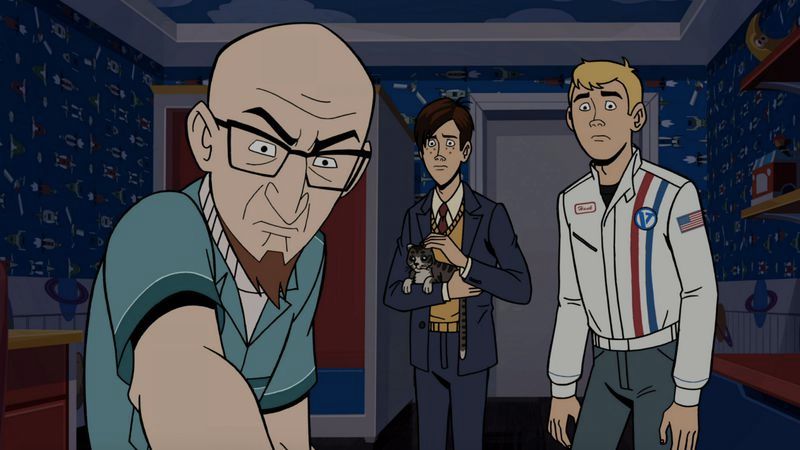
Beginning as a relatively straightforward Johnny Quest parody, over the course of its first two seasons The Venture Bros. developed a mythology as deep and rewarding as that of the comic books and sci-fi series that it was spoofing. By the fifth season, the show was layering in-jokes on top of in-jokes on top of parody, bringing them all together in ways that would make Larry David proud. Intricate in both jokes and plot, The Venture Bros. has incredible rewatch value—some episodes can only be fully appreciated upon a second or third viewing—and the personalities of the characters and the relationships between them are both bigger than life and affecting. (There’s a reason you’ve seen so much Venture Bros. cosplay.) []
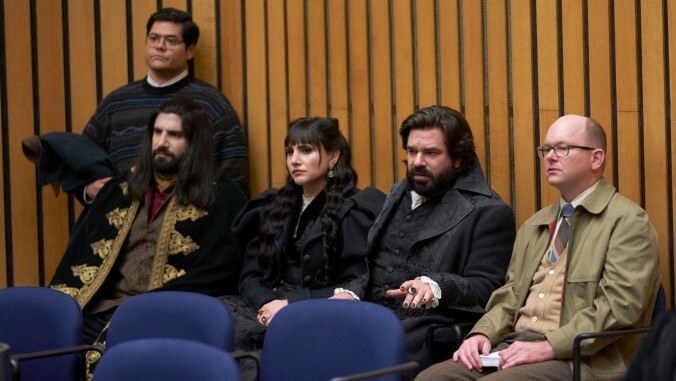
Adapting Taika Waititi and Jemaine Clement’s What We Do In The Shadows for television is a pretty simple exercise on its surface; after all, the mockumentary format has produced some of the . But capturing the playful, anarchic, awkwardly sexy spirit of the movie, particularly over an entire season, is a more complicated task, one that FX’s version of What We Do In The Shadows happily accomplishes. The series carries over the comedic and storytelling style of the film—hello, doctored historical illustrations and long, silly lists—while expanding its internal mythos to include psychic vampires who feed on boredom and a council of immortal bloodsuckers to which Wesley Snipes calls in over Skype. But the best example of the way What We Do In The Shadows builds on its namesake is in the new roster of vampires plotting their takeover of America, or at least Staten Island: Dorky medieval warlord Nandor (Kayvan Novak), unabashed hedonist Laszlo (Matt Berry, in an inspired bit of casting), and sex-positive undead feminist Nadja (Natasia Demetriou). Oh, and Colin Robinson (Mark Proksch). He’s also there. []
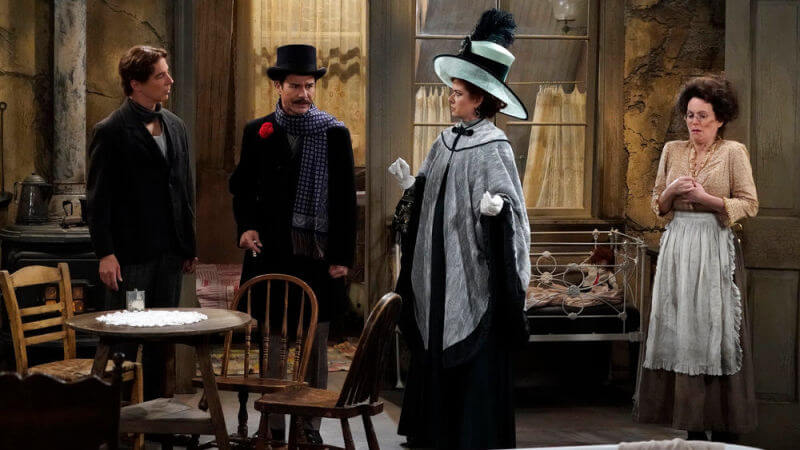
Creators Max Mutchnick and David Kohan produced Will & Grace for Warren Littlefield-era NBC, a network that was sitting pretty, particularly when it came to sitcoms, and could afford to take a chance on a show about a straight-woman/gay-man friendship (one based on Mutchnick’s own relationship with his best friend). Will and Grace were best friends since college, dated before Will came out of the closet, and have remained remarkably, often unhealthily, close. The tagline to the pre-premiere ad campaign was “They’re not a couple. They’re a couple of best friends,” so clearly, the idea from the beginning was that Will’s sexual orientation was going to be this show’s twist on the relationship-sitcom formula. []

The Wonder Years is the coming-of-age story of 12-year-old Kevin Arnold, who attempts to navigate the rough waters of adolescence and survive both the suburbs and the cultural transition from the ’60s to the ’70s. But if that was all The Wonder Years was, the show would never have served as the cultural milestone that it did. Though restricting itself to Kevin’s point-of-view at all times—to the extent that adult Kevin (voiced by ) serves as each episode’s narrator—the show always took care to empathetically detail the struggles that each character dealt with, even while filtered exclusively through the eyes of an adolescent boy. []

Though its theme song seemed to tease an inevitable breakup, You’re The Worst never truly hinged on whether Jimmy Shive-Overly and Gretchen Cutler—stars of their own self-destructive Los Angeles love story—would stay together. By the end, it was clear that the real question looming over Stephen Falk’s savagely funny FX comedy was and always had been: Should they? For five lacerating seasons, the show kept viewers guessing at an answer; along the way, it toed other lines (emphasis on the toe, for Jimmy’s prurient sake), drifting into drama, sensitively handling the topics of clinical depression and PTSD, and getting conceptually adventurous from episode to episode. The show’s real feat, though, was its sustained tightrope act of empathy: how it kept us wishing the best for characters that remained, as advertised, kind of the worst. []
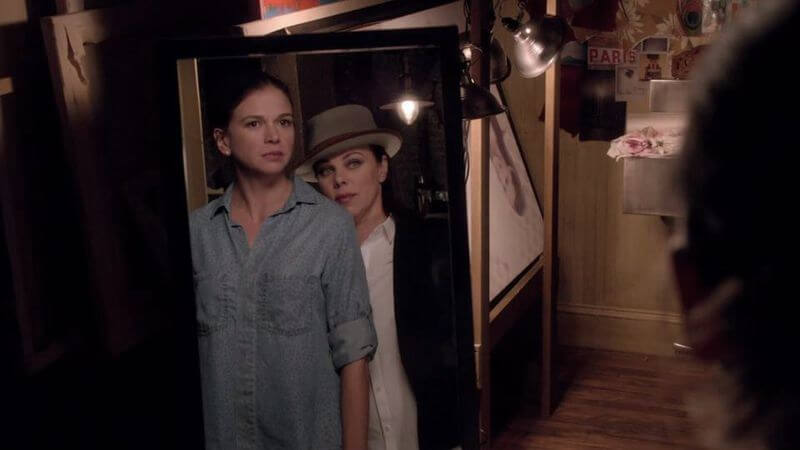
Based on the novel of the same name by Pamela Redmond Satran, Younger follows Liza Miller, a newly divorced 40-year-old suburban housewife who masquerades as a 26-year-old to get a job in the youth-favoring publishing industry. This ridiculous premise shouldn’t even work, but thanks to strong writing from creator Darren Star and a winning lead performance by Sutton Foster, Younger is utterly charming. A series about a woman looking to reinvent herself after a devastating loss may seem like a slam dunk for Foster, but the tone of the series is tricky and it’s hard to imagine it working at all with anyone besides the alum. Foster deftly switches between slapstick comedy, wordplay, and moments of thoughtful introspection, and maintains a vital air of mischief throughout. Liza can’t believe she’s pulling this off, which lets the audience suspend its disbelief and go with it. []
